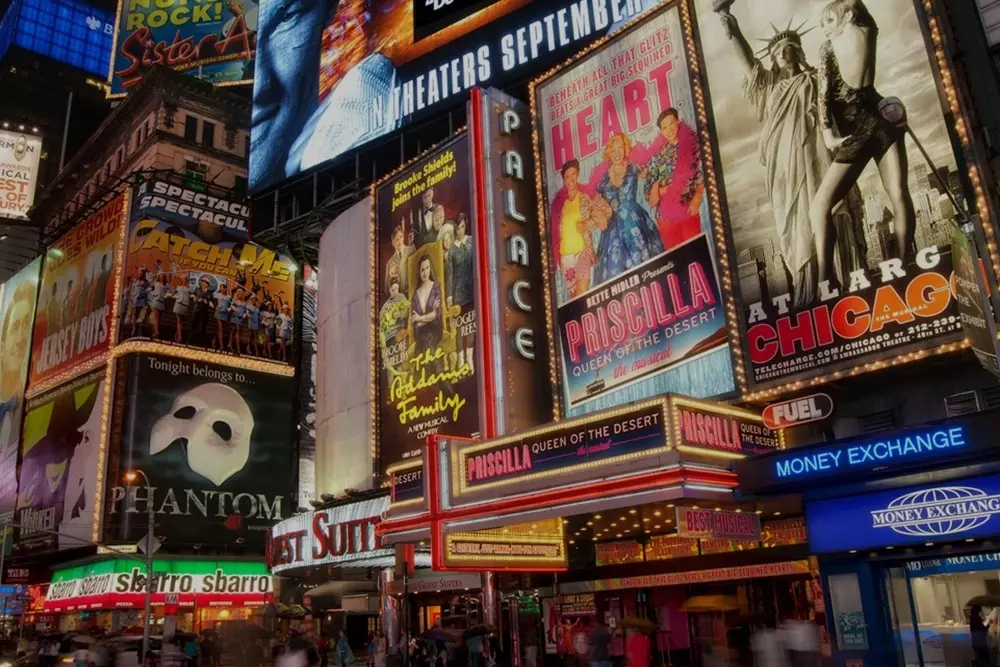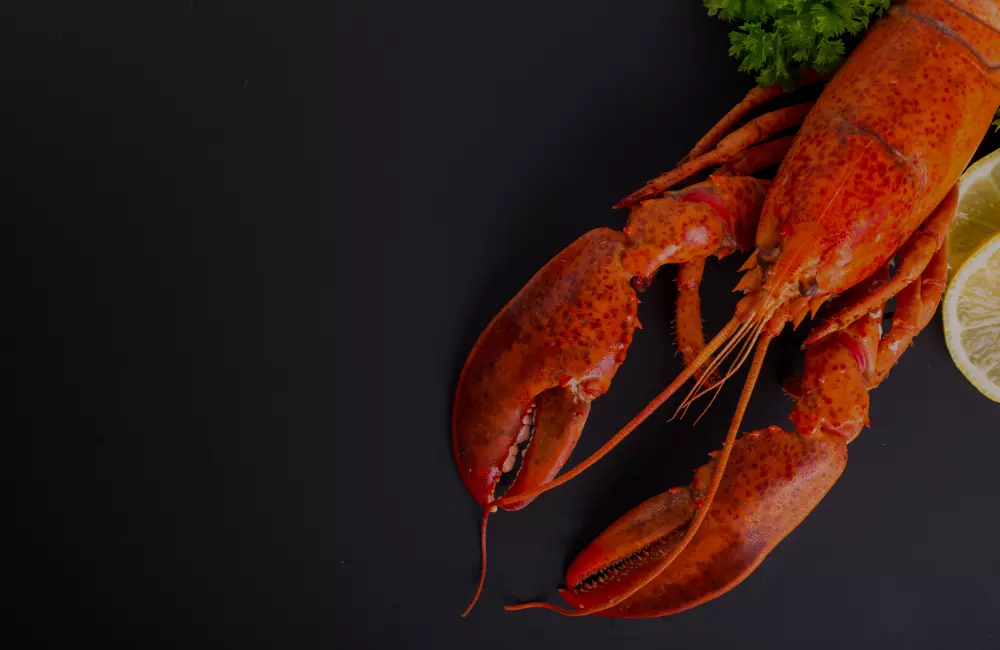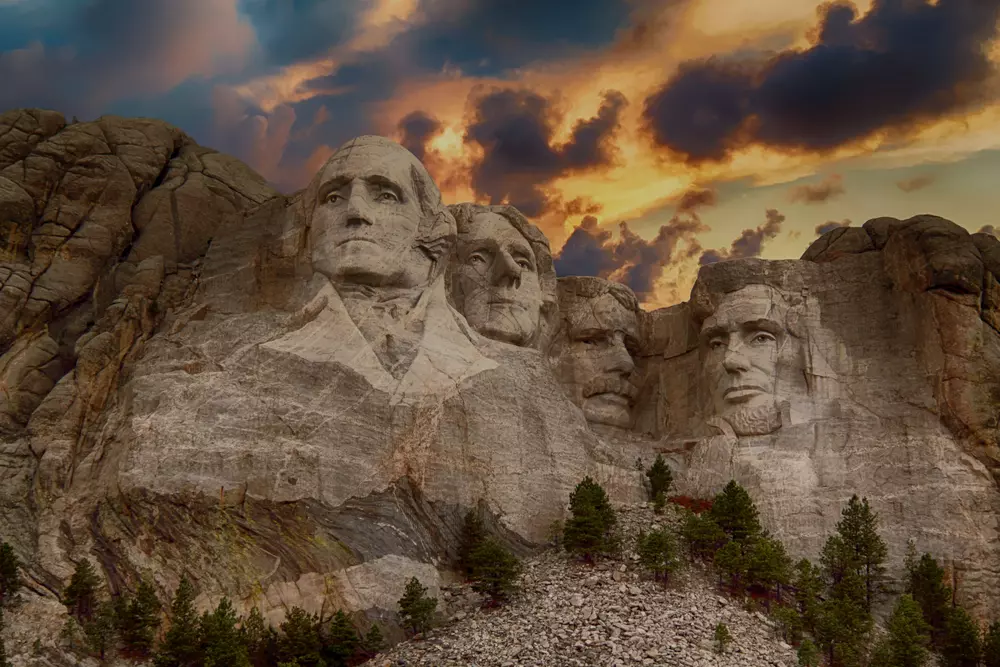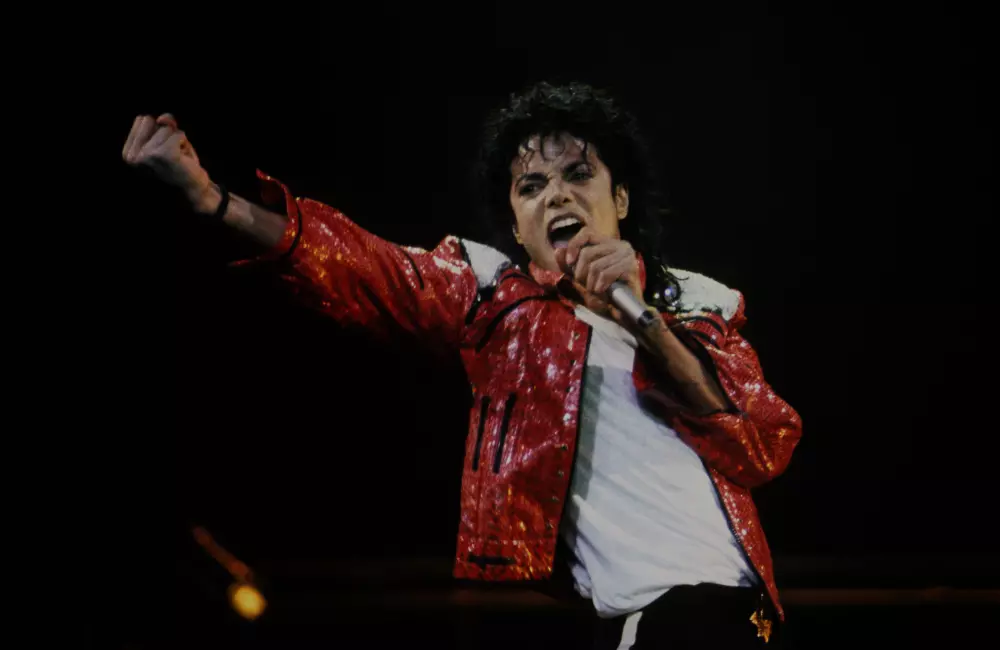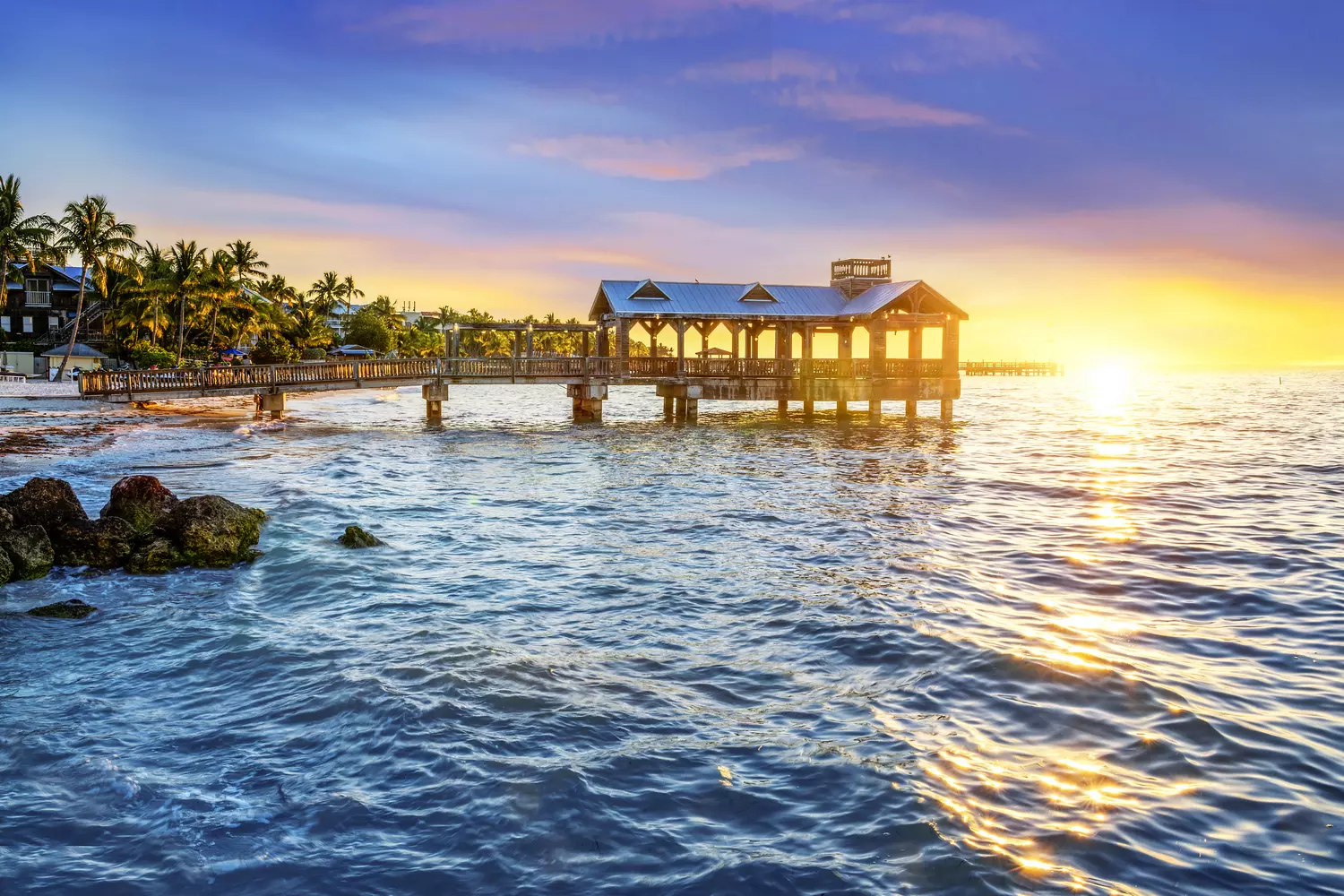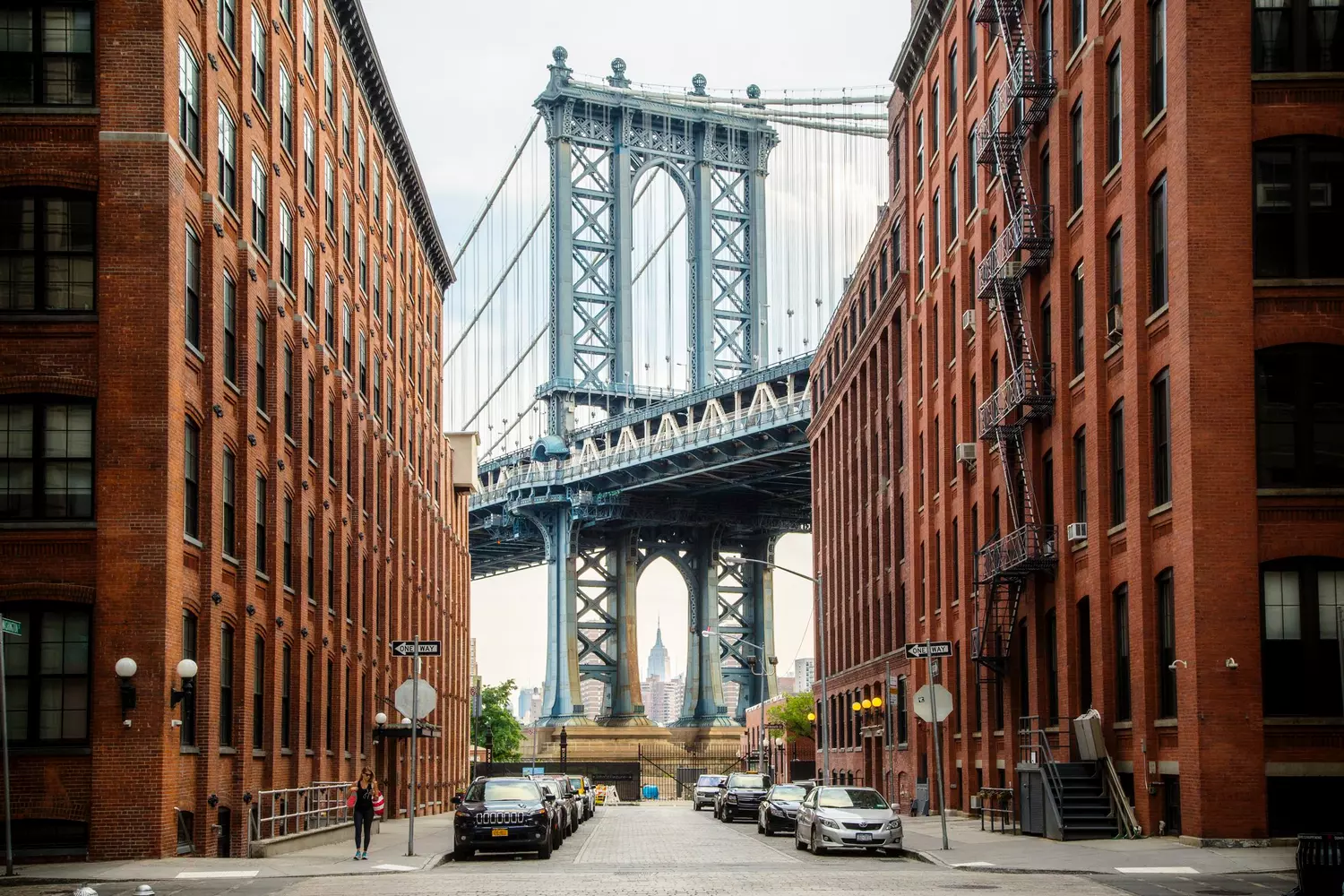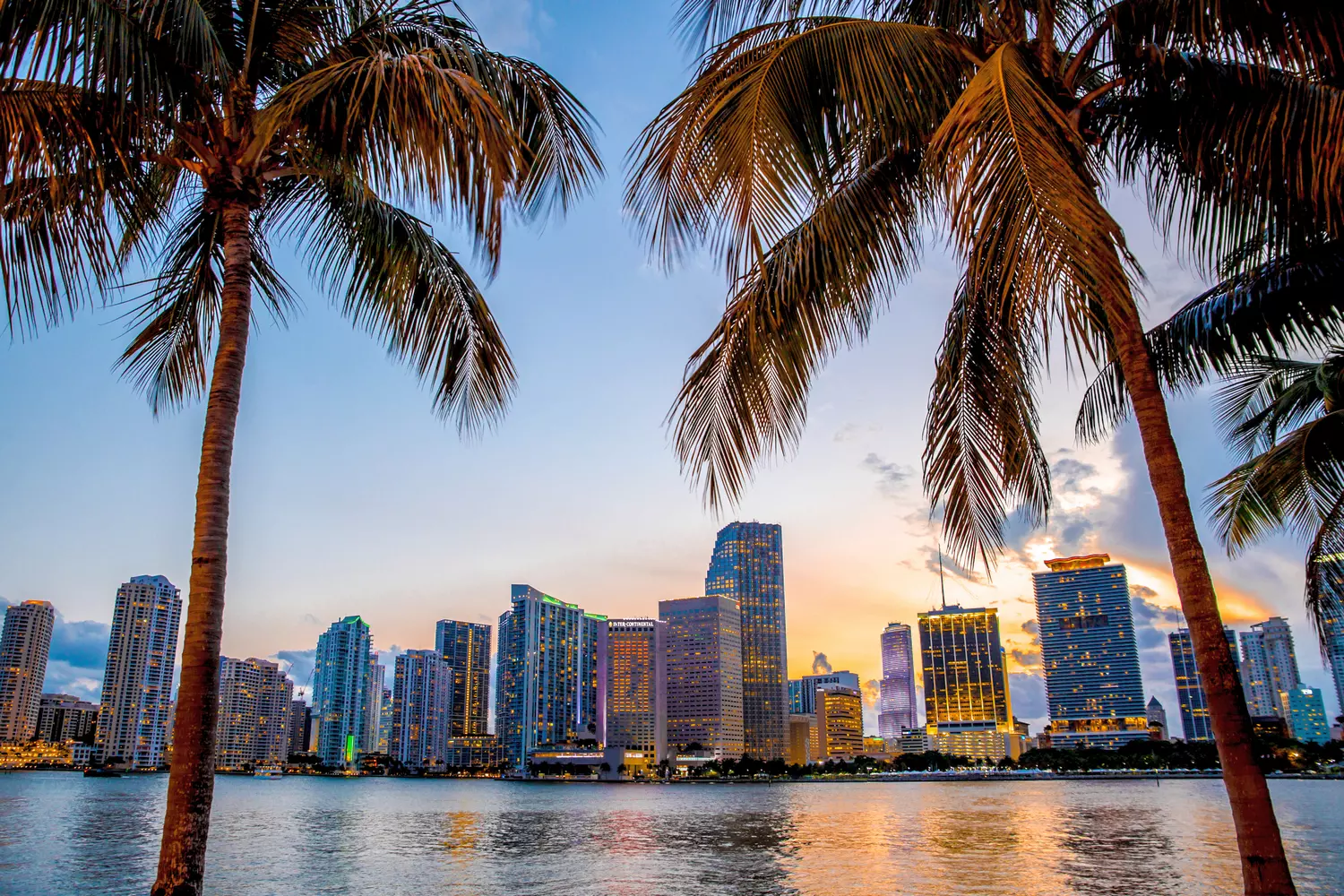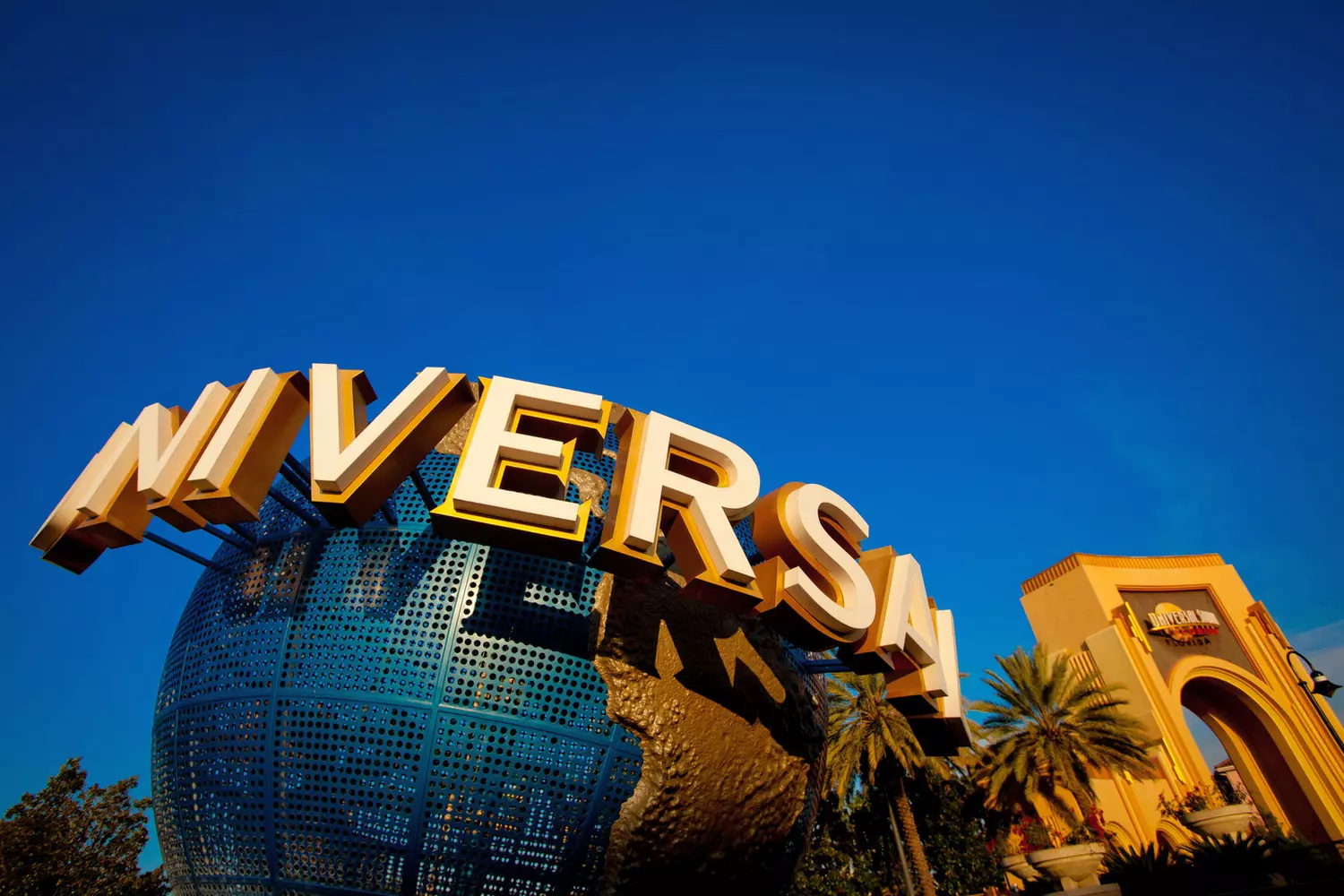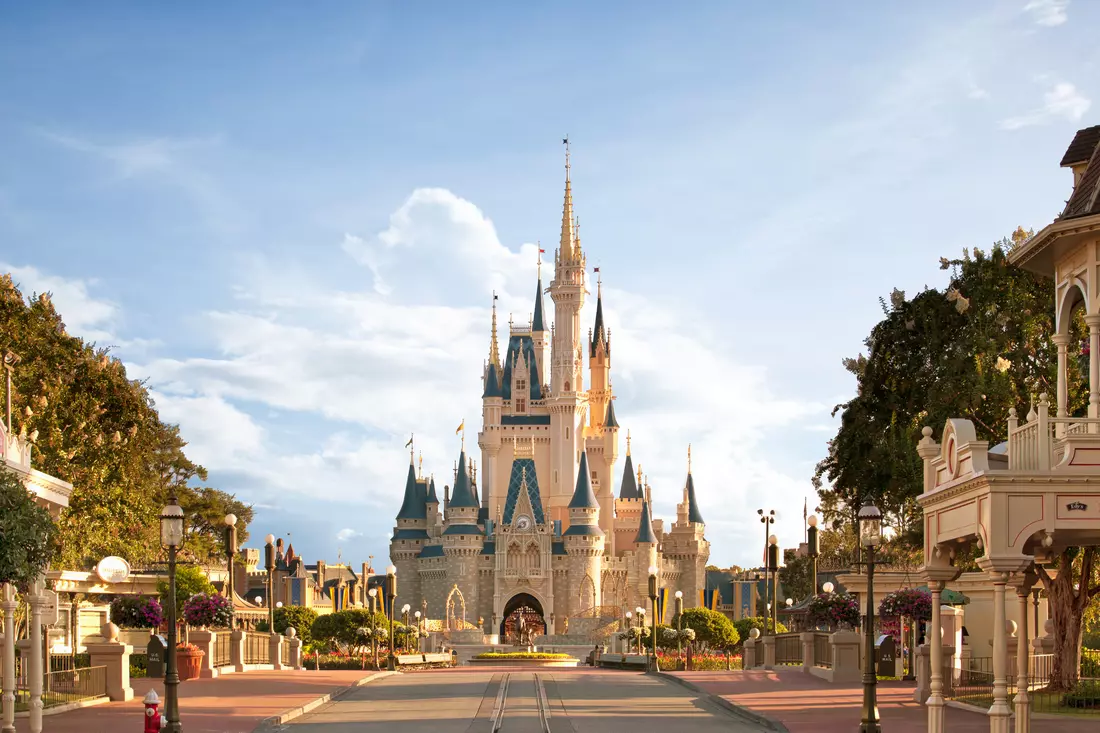There are cities you can’t simply "visit" — you can only experience them. They don’t leave photos in an album, but a taste on your tongue, a melody in your mind, and the feeling that you’ve stepped into a parallel reality. New Orleans is exactly that. It’s not just a spot in the southern USA. It’s a cultural organism, perpetually intoxicated by music, history, and freedom. Every corner here breathes something both ancient and pulsating at the same time. Even the sidewalks dance.
You won’t find another city like this in America — and perhaps in the entire world. French charm and African rhythm, Spanish Gothic and American expressionism, deeply rooted spirituality and complete freedom — all falling in love before your very eyes. New Orleans is a noisy café with live saxophone, a street parade that starts suddenly and never ends, a passionate kiss, whispers of voodoo, and the heavy scent of jasmine in the air.
Everyone here is on their own wavelength, and yet — in a shared rhythm. It’s easy to be yourself here because no one judges. On the contrary — you are welcomed just as you are. Don’t be surprised if a taxi driver invites you to a jam session, or a bartender shares a family story about a masquerade. Here, every person carries a myth, and every day is like a stage where music is always playing.
What makes New Orleans special? It’s not just the birthplace of jazz and legends. It’s a place where celebration becomes everyday life, and everyday life becomes art. Here you don’t just “see the sights” — you live with your eyes wide open, catching every detail, from the wrought iron on balconies to the smell of fresh beignets.
If you’ve been searching for a spot on the map to disconnect from the mundane and connect to something real — welcome. New Orleans is waiting. And it’s nothing like you imagined. It’s better.
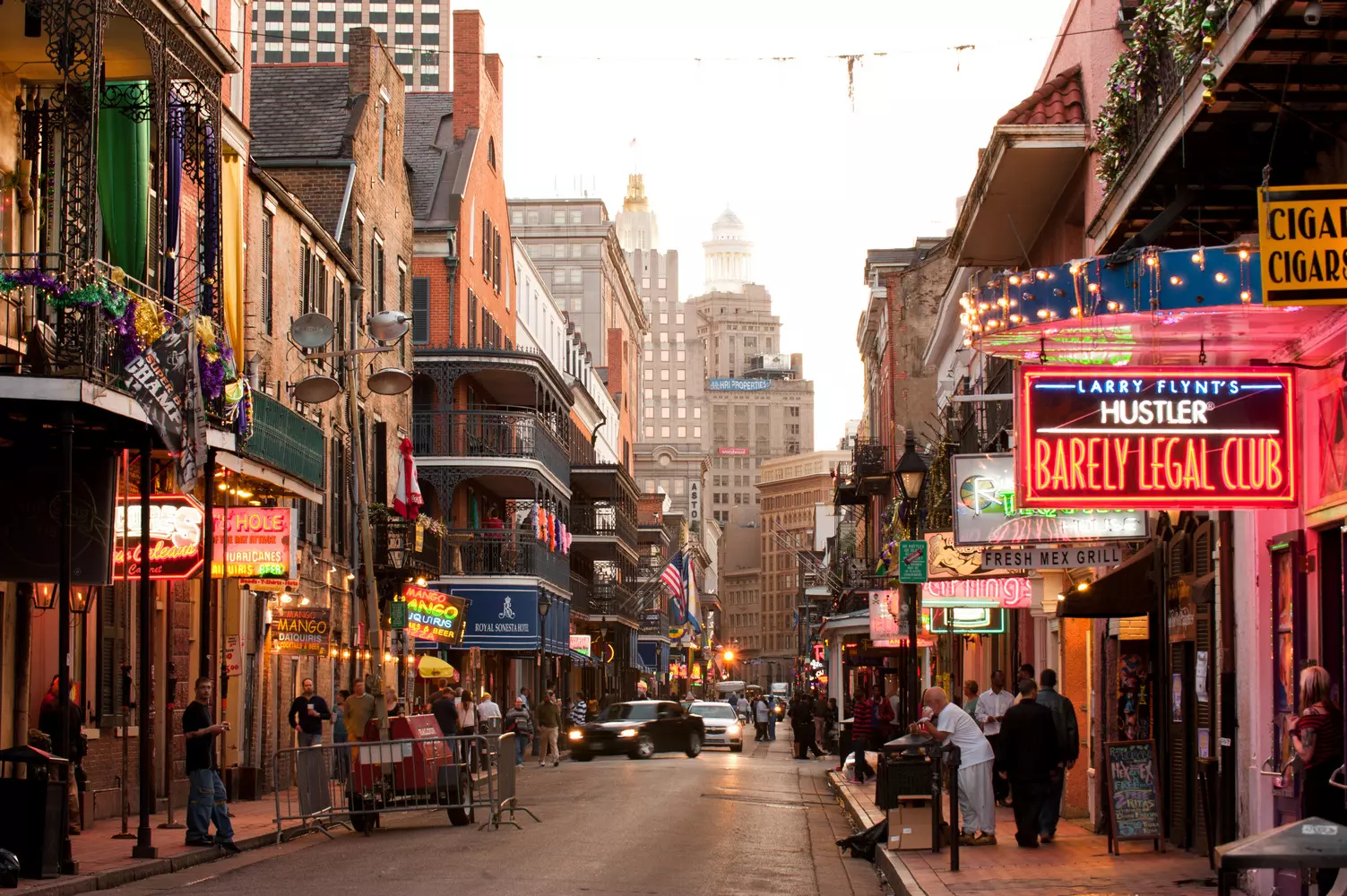
“The air in New Orleans was so sweet it seemed to come down in multicolored, soft silk scarves… you could smell the river and the people — the dirt, the black molasses, every tropical exhalation.” — Jack Kerouac
Where New Orleans Is and What Makes It Special
New Orleans is not just a city on the map of the USA. It is an energetic magnet, like a whirlwind swirling in the very heart of the American South. It is located in the southeastern part of the state of Louisiana, on the southern shore of Lake Pontchartrain, near the coast of the Gulf of Mexico. And — most importantly — at the bend of the majestic Mississippi River, at its mouth, where the water always carries with it scents, sounds, and stories.
It is precisely this strategic location that made New Orleans a major port, and later — a cultural crossroads where ships, destinies, and eras intersected. In the 18th century, the French arrived here, then the Spanish, and later the Americans. But none of them completely reshaped the city in their own image. It remained what it always was — free and unpredictable, seasoned with colonial style, African spirit, and Southern individuality.
Why New Orleans is unlike any other city in the USA
- 01. French-Spanish heritage in architecture and language
New Orleans has retained its European soul to this day. Walking through the French Quarter, you might often catch yourself thinking: "Am I in Paris? In Madrid? In Havana?" And yes, and no. The city is unique because it has absorbed traits of all these places, yet it remains itself.
- Balconies with delicate wrought-iron lacework;
- Colorful wooden shutters;
- Narrow cobblestone streets;
- Catholic churches with Spanish bells.
Even the street names here are in French, and many local surnames have a Spanish accent. And although English dominates, the air still carries the scent of Creole linguistics, where “bonjour” coexists with “how y’all doing.”
- 02. The birthplace of jazz
No other American city gave the world a musical explosion like New Orleans. It was here, in the poor neighborhoods, at the crossroads of African rhythm, European harmony, and street spirit, that jazz was born. It didn’t just “sound” — it lived on the streets, in brothels, at funerals, in restaurants, and in kitchens.
It was from here that Louis Armstrong emerged — a boy with a trumpet who revolutionized world music. And even today, you can hear a saxophone right from the porch of a residential house — simply because someone wanted to share their mood. - 03. Creole and Cajun cuisine — a feast for the taste buds
Gastronomy is another element that makes New Orleans a living organism. Here you don’t just eat — you enter into an ancient dialogue of cultures through spices, texture, and aroma.
Creole cuisine is the legacy of the French and Spanish, mixed with African and Caribbean influences. It is complex, aromatic, and festive. Cajun cuisine is simpler, more “rustic,” but no less delicious. - 04. Mysticism, cemeteries, and voodoo
The city is surrounded by an aura of mystery. Here, joking about voodoo culture is not accepted — it is taken seriously as part of the spiritual world. In New Orleans, everything is real: priestesses, amulets, spells, ghost stories.
Evening cemetery tours, grim legends, mystical shops selling candles, herbs, and charms — all this is everyday life in New Orleans. - 05. The city of endless festivals and carnivals
New Orleans lives in celebration mode. The most famous is Mardi Gras. This is not just a day, but an entire season — with parades, costumes, processions, theatrical street performances. People throw beads from balconies, floats with orchestras parade through the streets, every evening feels like the finale of a grand show.
You don’t need to come to New Orleans “on a specific date.” It’s always celebrating something. It is the celebration itself.
New Orleans is a symphony with no false notes. It is a city where myths come alive, where the blending of cultures has become a way of life, and every street is like a stage. It excites, surprises, and pulls you in. And yes, you will remember it not as a place you visited, but as a feeling you experienced. Ready to experience it for yourself?
Symbols of New Orleans: from lilies to street bands
New Orleans is not just a city with character. It is a city-brand, a city-legend, a city with so many symbols that each deserves a separate chapter. These symbols form the cultural code of the city, easily readable even by those who have never been here. But to truly understand New Orleans, you need to know its signs. There are many, and each has its own story, energy, and soul.
- 01. Fleur-de-lis — the lily flower, the city’s emblem
Fleur-de-lis — a stylized image of a lily that can be seen everywhere: on flags, coats of arms, signs, architecture, souvenirs, and even street lamps. This symbol came from France — the country that founded the city in 1718. In Catholic tradition, the lily is associated with purity and spirituality, and in New Orleans it became a symbol of heritage, pride, and strength of spirit.
The fleur-de-lis became especially popular after Hurricane Katrina in 2005, when it became a sign of recovery, struggle, and the unity of the residents. Today, people wear it as tattoos, paint it on houses, and give it as a talisman. - 02. Jazz and street brass bands
If the city had a voice — it would sound like a saxophone. Music is not just a symbol but the breath of New Orleans. It was here that traditional jazz was born — a mix of African rhythms, gospel, and blues, played on the streets, in churches and brothels.
The main symbol of the city’s musical part is the brass band, or street brass orchestra. You can meet them at weddings, funerals, in bars, at parades, or just in the middle of the street. These improvised performances are part of the city’s DNA. Each band wears unique colors, flags, and banners. - 03. Masks and beads of Mardi Gras
The Mardi Gras carnival is not only the largest festival in Louisiana but also one of the main symbols of the city. A whole industry is dedicated to it, and its attributes are recognized worldwide:
- Masks — usually purple, green, and gold. They symbolize magic, justice, and power.
- Beads — plastic necklaces thrown from floats to parade participants. Collecting beads is a local tradition.
- King Cake — a festive cake with a surprise inside, eaten during Mardi Gras season.
These elements have crossed over from the carnival into everyday life: masks hang in cafes, beads decorate trees and car mirrors, and cakes can be bought year-round.
- 04. Café du Monde and beignets
If you ask any American what they associate with New Orleans (after jazz), they will almost certainly say: Café du Monde. This iconic coffee kiosk has been operating since 1862 and is considered a national gastronomic symbol of the city. What do they serve here?
- Hot chicory coffee — a unique taste, smoother and thicker than regular coffee;
- The famous beignets — fluffy doughnuts generously sprinkled with powdered sugar.
This is not just breakfast — it’s a ritual. Sitting on the terrace of Café du Monde with a cup of coffee and watching musicians pass by the streets is a form of meditation, New Orleans style.
- 05. Voodoo and mysticism
No symbol of New Orleans provokes as much controversy and interest as voodoo. Despite widespread stereotypes, this is not “black magic,” but a real historical religious system brought from Haiti and Africa through slaves. It absorbed Catholic elements and adapted to the local culture. Voodoo symbols are everywhere here:
- Amulets and talismans in shops;
- Figurines, images of spirits (loa), magical pouches;
- The name of Marie Laveau — the legendary priestess whose tomb has become a pilgrimage site.
Mysticism, ghosts, spirits — in New Orleans, this is not folklore but part of the atmosphere. And you feel it on almost every street.
- 06. Sports: New Orleans Saints
The symbol uniting the entire city is the football team New Orleans Saints, competing in the NFL. After Hurricane Katrina, the team became a symbol of hope and revival. Their logo — the same fleur-de-lis — now also represents the powerful energy of unity.
During matches, the whole city freezes. People wearing Saints jerseys, with painted faces, gather around screens or go to the Superdome to shout “Who dat!” — the traditional battle cry of the fans.
The symbols of New Orleans are not marketing images. These are living elements of its identity. They were not invented for tourists — they were born from real life, from pain, celebration, struggle, and creativity. When you hold a Mardi Gras mask in your hands, drink coffee with beignets, or hear a saxophone on the corner — you touch the true code of the city.
And to truly understand all these symbols — you need not only to see them, but to live them. Feel them. Hear them. Smell them. Taste them.
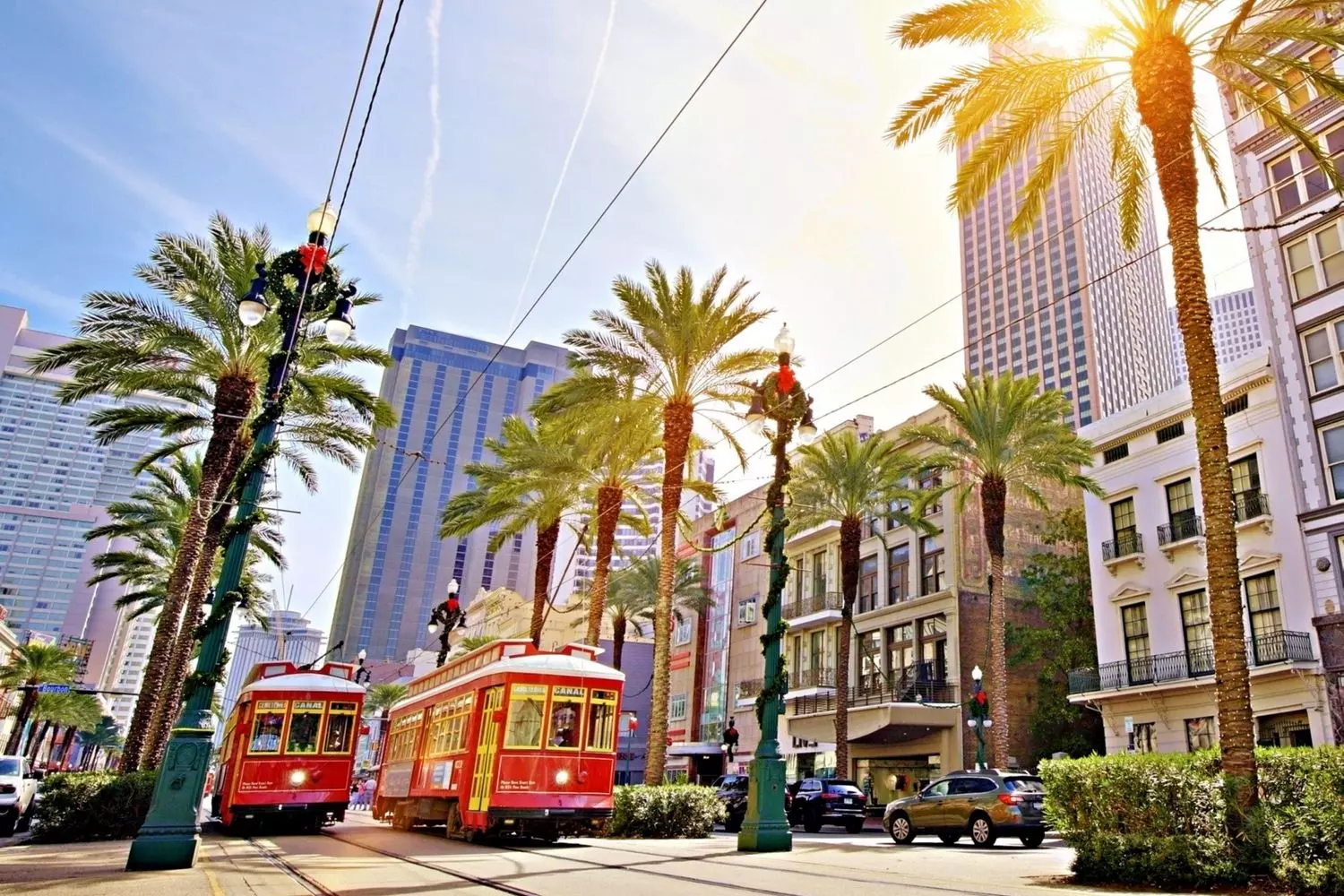
The History of New Orleans: From Swamp to America’s Cultural Gem
Where else will you find a city that over three centuries has been a colony of France, Spain, and the USA — yet remained itself, like a stubborn jazzman playing at the crossroads of eras? New Orleans is not just a point on the map of Louisiana. It is a living entity with a rich soul, filled with the sounds of saxophones, the aromas of Creole cuisine, and stories intertwining colonialism, slavery, the fight for freedom, and cultural flourishing.
- 01. French roots and swamps
The city was founded in 1718 by the French explorer Jean-Baptiste Le Moyne de Bienville and named after the Duke of Orleans. The location was rather controversial: swamps, the mouth of the Mississippi, frequent floods… But it was precisely this location that made New Orleans a strategic trade hub. By the 18th century, French, African, Spanish, Native Americans, and Métis lived here, creating a unique ethnocultural cocktail. - 02. The Spanish mark and fire
From 1763 to 1800, the city was under Spanish control. It was during this period that two devastating fires occurred (in 1788 and 1794), destroying most of the French architecture. The Spanish rebuilt the center in colonial style, and to this day, the buildings of the French Quarter resemble Andalusian estates more than French mansions. - 03. The Louisiana Purchase and the American chapter
In 1803, the United States bought the Louisiana territory from France in the famous "Louisiana Purchase", and New Orleans became part of the young republic. Despite the transition under the American flag, locals were in no hurry to become Americans: French was still spoken here, Catholicism practiced, and Creole traditions preserved. - 04. Slavery, freedom, and culture
Being a major port, New Orleans quickly became one of the main centers of slave trade in the South. Thousands of Africans were brought here and sold at local markets. However, it was African culture — through music, religion, and cuisine — that became the foundation of the unique identity the city is famous for. - 05. The Civil War and decline
During the Civil War, the city was occupied by Union troops — it was too strategically important to leave to the Confederacy. After the war, the economic situation worsened, and until the mid-20th century, New Orleans struggled with poverty, segregation, and epidemics. - 06. The birth of jazz and new hope
Despite the hard times, jazz — a musical style that changed the world — was born in this city. In the early 20th century, Louis Armstrong, Jelly Roll Morton, and other New Orleanians started playing music in clubs and streets, blending blues, ragtime, gospel, and African-American rhythms.
This marked the beginning of a new flourishing: tourists flocked to the city for the atmosphere, music, culinary delights, and street festivals. - 07. Hurricane Katrina and revival
In 2005, the city faced a catastrophe — Hurricane Katrina destroyed the levees, flooding up to 80% of the area. Thousands died, tens of thousands lost their homes. However, New Orleans endured. Over time, a large-scale reconstruction began, involving not only government agencies but also ordinary residents, artists, and volunteers from around the world.
The city not only recovered but also became a symbol of human resilience and cultural revival. - 08. New Orleans today
Today, New Orleans is a cultural center with an international reputation. Festivals, Creole and Cajun cuisine, French charm, African rhythms, Spanish architecture, and American drive — all blended into one city that remains true to itself no matter what.
People don’t just live here — they live beautifully, with soul and music. New Orleans defies classification: it is a city that you need to feel, hear, and love.
Interesting fact: New Orleans had a unique community of free people of color — gens de couleur libres, who had their own education, property, and cultural elite. Such a community did not exist in any other U.S. state at that time.
Pirates of New Orleans: from legends to history
New Orleans is a city of jazz, strong cocktails, and voodoo, but few know that its past is thick with the smell of gunpowder and sea salt. Pirates here are not just folklore. These were real historical figures who left their mark on the architecture, economy, and even the liberation of the USA from the British.
- 01. Who were the pirates of Louisiana?
The most famous among them was Jean Lafitte — a semi-legendary corsair of French origin who operated in the waters of the Gulf of Mexico in the early 19th century. Together with his brother Pierre, he established a network of secret bases and warehouses in the swamps of southern Louisiana, including the famous pirate fortress in the Barataria area.
Lafitte was not an ordinary robber. He knew how to do business. Under the cover of a "private business" involving smuggling slaves and goods, he built an entire underground empire that supplied cheap products and weapons not only to local residents but also to influential New Orleans merchants. - 02. From pirate to hero
In 1814, when the British began their assault on New Orleans during the Anglo-American War, the U.S. government was forced to seek help from the very man they had recently declared an outlaw. Jean Lafitte sided with the Americans, providing them with weapons, ammunition, and his men. His pirates played a key role in the famous Battle of New Orleans under the command of General Andrew Jackson. After the victory, Lafitte was pardoned, and his name became part of the heroic saga of the American South. - 03. Where to find pirate heritage today?
Modern New Orleans has not forgotten its "sea wolves." Pirate legends live on in tours, street names, and the spirit of the city:
- French Quarter
This is where Lafitte met with influential merchants and officials. Some buildings still hold traces from those times. - Lafitte’s Blacksmith Shop Bar
One of the oldest bars in the USA, reportedly owned by Lafitte. Inside — candles, dark beams, and ghosts of the past. - Pirate swamp tours
Excursions through mysterious mangrove thickets where ships with black sails once hid.
Interesting fact: Jean Lafitte disappeared from records in the 1820s. It is believed he died in a naval battle, but his body was never found. Some believe he went into hiding and lived a long life under another name. Others say his spirit still wanders the streets of New Orleans seeking new adventures.
Want to touch the living history of America? New Orleans awaits — with open windows filled with saxophone sounds, balconies wrapped in greenery, and street artists telling their stories without words.
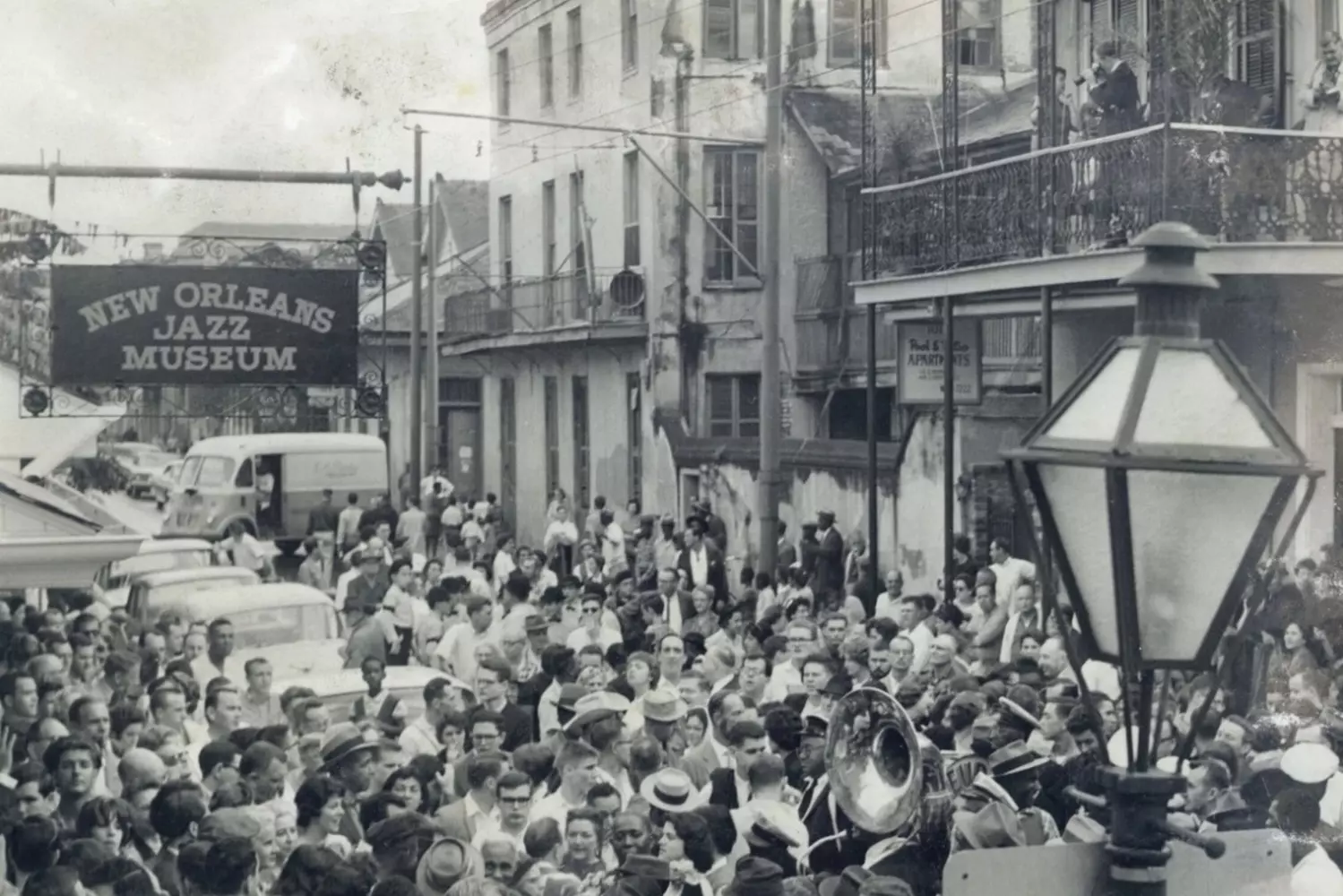
Nature of New Orleans: Where the Swamp Breathes Life
New Orleans was lucky to be born at the crossroads of the elements. This is a city where nature is not just a backdrop, but a full participant in its history. Here, you don’t need to travel far to find yourself in the jungle — just head beyond the city center. It feels as if the city itself grows out of the swamps, lakes, and coastal forests.
- 01. The city on the water: where it all begins with the Mississippi
The main natural artery of New Orleans is the Mississippi River. Locals simply call it “The River” — with respect, as if speaking about a living being. It has shaped the city’s fate: bringing wealth, but also threats. Thanks to the river, New Orleans became a major port, but it also suffers from floods.
The Mississippi is both a transportation artery, a cultural symbol, and a place for strolls. Its water level is unpredictable, but the banks are fortified with strong levees. Despite this, residents still treat its whims with awe — because without it, there would be no city. - 02. Swamps and bayous: the heart of wild Louisiana
Beyond the city neighborhoods begin the swamps and mangrove thickets — the famous bayou. This word comes from the language of the native Indians and means slowly flowing water. Bayou is not just a natural phenomenon; it is the soul of Louisiana. Here live herons, otters, alligators, and thousands of insect species. And countless legends and tales of Creole and Cajun cultures.
If you want to feel the true spirit of the South — take a boat tour through the bayou. You will be immersed in a saga of misty mornings, whispering trees, and eyes glimmering in the dark water. - 03. Lake Pontchartrain: a fresh-water sea at the city’s gates
To the north of the city lies the vast Lake Pontchartrain, which looks like an inland sea. Its width reaches 40 km, and it is crossed by the world’s longest bridge over water — the Lake Pontchartrain Causeway, more than 38 km long.
The lake has become a favorite spot for fishing, picnics, and water sports. Here you can see white seagulls and pods of dolphins, if you’re lucky. At sunset, the water turns into a rum-colored mirror — a sight impossible to forget. - 04. The weather: the hot embrace of the subtropics
New Orleans lies in a humid subtropical climate zone. Summers are hot and muggy — temperatures often rise above +35 °C, and humidity is overwhelming. It’s a perfect environment for lush vegetation, but a real challenge for people.
Winters are mild, almost spring-like. Snow is rare, but rain is abundant. Humidity is a constant companion year-round, making local nature lush and the air thick and heavy.
However, this climatic paradise has a downside: the city suffers from hurricanes. The most destructive of them — Katrina in 2005 — forever changed not only the landscape but also the world’s perception of New Orleans. - 05. Green islands in the city
Despite its coastal location and dense development, the city has plenty of green spaces. The most famous park is City Park, one of the largest urban parks in the USA. It is even older than Central Park in New York and is renowned for its oak trees, some over 600 years old. Spanish moss, camellias, and magnolias grow here — a true botanical symphony of the South.
Nearby is the Louisiana Botanical Society Garden, a Japanese garden, and a butterfly conservatory. All of this creates the feeling that even in the heart of a metropolis, you can breathe deeply.
Fun fact: Over 1.3 million acres of swampy lands surround New Orleans — some of the most biodiverse areas in the USA.
Want to experience this diversity firsthand? American Butler organizes private tours into the very heart of Louisiana’s nature — from bayou boat trips to fishing in Pontchartrain. Feel how the living nature of New Orleans sounds when you’re not just a tourist, but an explorer of the South’s soul.
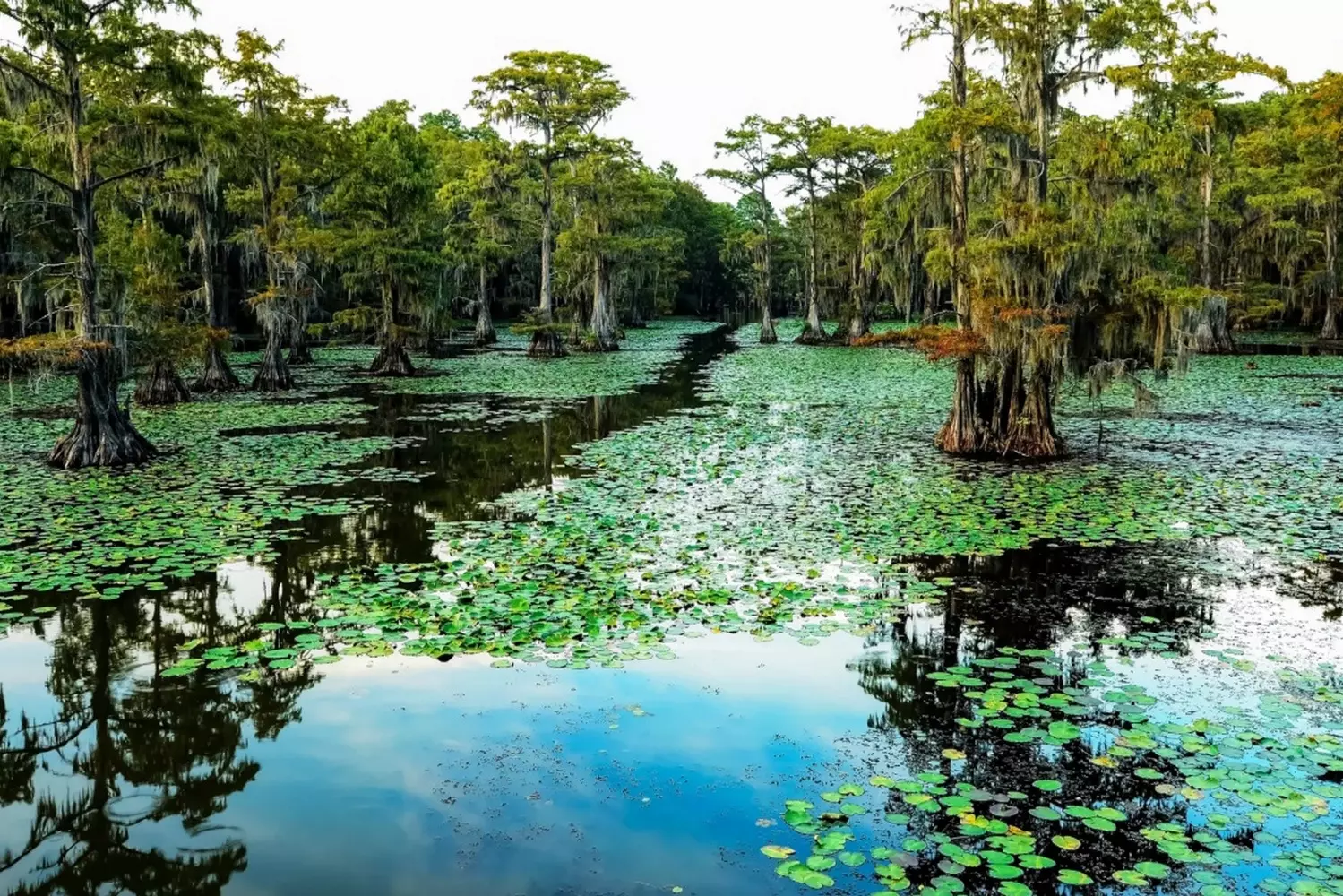
Population and Economy of New Orleans: A City That Survives and Sings
New Orleans is not just about jazz, Creole cuisine, and carnivals. It’s a city where history intertwines with modern challenges, and where the smiles of locals sometimes mean more than oil. To truly understand how the city lives today, one must look closely at its economy and population. They are a mirror reflecting the soul of Louisiana — stubborn, talented, diverse, and vibrantly alive.
- 01. Population: a melting pot of cultures and characters
As of 2025, New Orleans has just over 370,000 residents, although before Hurricane Katrina (2005), the population was over 480,000. The city is not only recovering but gradually coming back to life. Every returnee or newcomer is not just a statistic but part of a larger cultural tapestry. So, who are the New Orleanians?
- African Americans make up about 60% of the population. Their contribution to the city’s culture, music, and cuisine is invaluable — from jazz to gumbo.
- White residents account for around 30%, including descendants of French, Spanish, Irish, Italian, and Anglo-Saxon immigrants.
- Latinos and Asian communities form a growing minority, adding even more diversity to New Orleans.
- Special mention goes to the Creole population — descendants of mixed marriages between French, Spanish, African, and Native American peoples. They gifted the city with a unique dialect, cuisine, and way of life.
The city is famous for its strong community spirit, warm neighborliness, and extraordinary resilience. You can hear dozens of accents and see how a Catholic church, a voodoo temple, and a jazz club can coexist in the same neighborhood. That is New Orleans.
- 02. Economy: between port, tourism, and jazz
New Orleans’ economy is a mix combining cargo terminals, festivals, healthcare, oil refining, and the aroma of coffee.
- Port and logistics
The Port of New Orleans is one of the largest in the US and a crucial hub on the Mississippi River. Over 100 million tons of cargo pass through annually. The city sits at the crossroads of transport routes connecting the Gulf of Mexico, the Midwest, and beyond.
Grain, oil, steel, coal, and bananas are handled here. And yes, New Orleans is the “banana capital” of the US: Caribbean fruits arrived here first as early as the 19th century, and Chiquita still operates through this port.
- 03. Tourism — the city’s heart
More than 18 million tourists visit New Orleans every year, and that’s no exaggeration. The local economy heavily depends on festivals, events, culinary tours, and cruise routes. The most lucrative include:
- Mardi Gras (a carnival attracting over a million tourists);
- Jazz Festival;
- Food, wine, Creole culture, voodoo, and even oyster festivals.
The hotel and restaurant industries are booming, and the average tourist spends around $700–1000 per visit.
- 04. Oil and gas
Offshore oil platforms in the Gulf of Mexico and refineries along the coast provide jobs and investment. Energy remains an important part of the region’s GDP, though less visible than tourism. - 05. Healthcare and education
The medical cluster in the BioDistrict area is rapidly developing. It hosts medical schools, research centers, hospitals, including the world-renowned Ochsner Health System. - 06. Creative economy
Yes, New Orleans seriously talks about its “jazz economy”. Musicians, artists, craftsmen, chefs, and guides are not just cultural layers but active contributors to the local GDP. Louisiana even offers tax incentives for film production and digital media, so many movies and series are shot here. - 07. Problems and challenges
Despite its tourist fame, the city faces several challenges:
- About 22% of the population lives below the poverty line.
- Urban infrastructure is still recovering from hurricanes.
- Issues in education and healthcare in poorer neighborhoods require long-term solutions. However, locals say: “We’ve seen the storm — and danced through it.”
The economy of New Orleans is not just abstract numbers. It’s the sound of a saxophone on the corner of Bourbon Street. It’s a beignet vendor in a tiny café. It’s a student singing arias in the French Quarter. It’s a streetcar driver who can tell you the entire history of Canal Street better than any guidebook.
Here, business is inseparable from culture, and people are tied to the past. Everything blends into one rhythm — and that rhythm sounds like jazz.
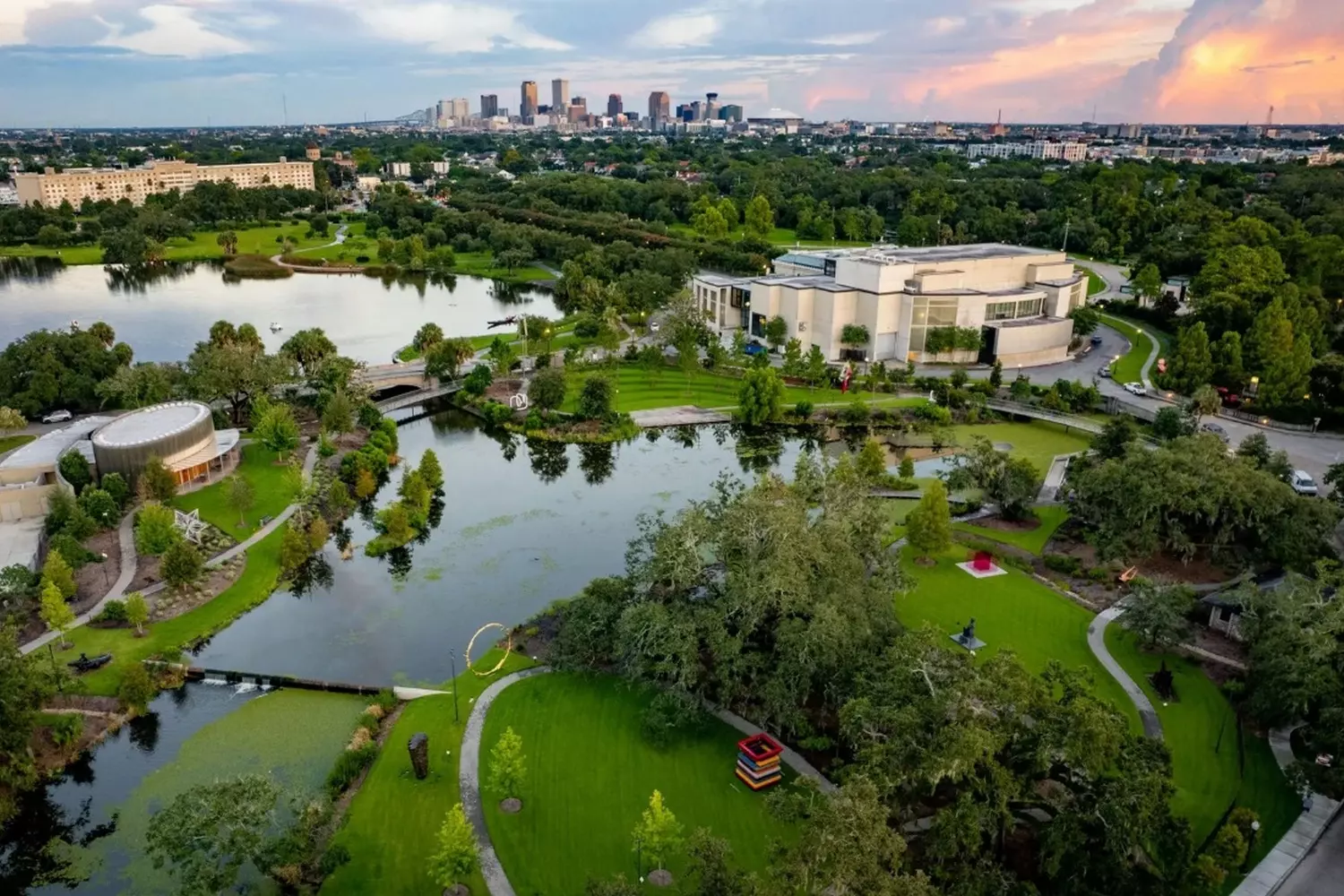
New Orleans Attractions: Where Music Meets Magic
ChatGPT сказал:
New Orleans is not just a city. It’s a spectacle where culture, history, architecture, and music blend together. Here, every building whispers stories of the past, every neighborhood lives to its own melody, and every evening turns into a little celebration. Below, we’ve gathered the main attractions you must see with your own eyes to truly feel the spirit of “The Big Easy.”
- 01. French Quarter
The birthplace of New Orleans. The French Quarter is the historic heart of the city, built back in the 18th century. Cobblestone streets, balconies with intricate wrought-iron railings, jazz playing from every café — all of this makes the quarter both an open-air museum and a stage for an endless celebration. - 02. Garden District
If you want to see New Orleans from another side — a quieter, more refined one — head to the Garden District. Here you’ll find luxurious 19th-century mansions in the Southern Gothic style, surrounded by greenery and blooming magnolias. It’s the perfect place for a leisurely stroll and to immerse yourself in the atmosphere of the Old South.
Fun fact: scenes from the movies “Interview with the Vampire” and “American Horror Story” were filmed here. - 03. Swamp Tours
Just half an hour from the city center — and you feel like you’ve entered another world. A swamp tour in Louisiana is a true expedition into the wild. Moss hanging from cypress trees, alligators, herons, mysterious silence — the swamps around New Orleans are full of life and secrets. Tour options include airboats, kayaks, and guided naturalist tours. - 04. The National WWII Museum
One of the highest-rated museums in the USA, where history comes alive right before your eyes. Interactive exhibits, personal stories of veterans, military equipment, immersive theaters — this museum impresses even those who are not particularly interested in military topics. - 05. Frenchmen Street
If you want authentic jazz — not touristy, but live and soulful — go to Frenchmen Street. Unlike the lively Bourbon Street, here you’ll find an authentic atmosphere with music playing on every corner. The best bars: The Spotted Cat, Blue Nile, d.b.a.
One of the oldest electric streetcars in the world still runs through New Orleans. The route passes through downtown, the Garden District, and Tulane University. It’s not just transport but a kind of retro-style sightseeing tour. - 06. Botanical Garden and City Park
The green soul of New Orleans — a huge city park where you can escape the noise. Here you’ll find:
- More than 2,000 plant species;
- Statues and fountains;
- An art museum;
- A magical “Fairy Forest” for children.
- 07. Oak Alley Plantation
Although outside the city (about an hour’s drive), this plantation is one of the most picturesque and photogenic places in Louisiana. The alley of ancient oaks leads to a colonial house where you can still feel the spirit of the past — with its grandeur, contrasts, and stories of slavery. - 08. New Orleans Pharmacy Museum
At first glance, a modest building in the French Quarter, but actually a real journey back to when pharmacists were almost shamans. This museum is housed in the building of the first licensed pharmacy in the USA (1823) and holds a collection of old medical instruments, poisons, surgical tools, pharmacy furniture, and even pharmaceutical perfumes. There’s also a bit of mysticism here — after all, in New Orleans, medicine sometimes whispers with spirits... - 09. Mardi Gras World
To truly understand the soul of New Orleans, you need to look behind the scenes of the city’s main festival — Mardi Gras. At Mardi Gras World, you can see how giant parade floats, costumes, and masks are made, and learn why the carnival king is more important than the governor. It’s not just a museum, but a working workshop full of color, humor, and delightful madness. - 10. Royal Street
If Bourbon Street is a loud party, Royal Street is a walk through an open-air art gallery. Here you’ll find antique shops, boutiques, street artists and musicians, galleries with rare exhibits, and quiet courtyards with fountains. It’s the perfect place to feel the aesthetic of New Orleans — with its old-world charm, the patina of time, and refined elegance. - 11. St. Alphonsus Church
Built by Irish immigrants in the mid-19th century, this church will amaze you not only with its neo-Gothic architecture but also with stunning stained-glass windows, hand-painted ceilings, and an aura of silent grandeur. Today it functions as a museum and a venue for organ music concerts — a unique chance to feel the city’s spiritual heart. - 12. The Pontalba Buildings
Two elegant rows of red-brick buildings on Jackson Square — the oldest apartment buildings in the USA (mid-19th century). Built by Baroness Micaela de Pontalba, they have become a symbol of elegant New Orleans. The ground floors house restaurants, cafés, and shops, while the upper floors contain upscale apartments. The inner courtyards hide green oases with fountains from passersby’s eyes. - 13. St. Louis Cathedral
The city’s symbol and the oldest active Catholic church in the USA. It towers over Jackson Square, seemingly connecting the city to the heavens. Inside — refined architecture, ancient icons, musical concerts, and outside — a constant gathering of artists, magicians, and musicians. In this contrast lies the essence of New Orleans. - 14. Bourbon Street
This is the heart of New Orleans nightlife. A blend of jazz, alcohol, neon lights, and eccentric characters. Here the party never stops: bars, clubs, strip shows, street performances, and a nonstop flow of tourists. Yes, it’s noisy and even a bit crazy, but one walk down Bourbon Street and you’ll understand why the city is called “The Big Easy.” - 15. Audubon Aquarium
The perfect place for family outings or for those seeking a bit of calm. The aquarium is located right on the Mississippi Riverfront and features more than 10,000 marine creatures: from Caribbean rays and seahorses to penguins and sharks. Especially impressive are the huge panoramic glass walls and interactive zones.
This is not just a city with attractions — it’s a stage where you become part of the performance. You can start your day with a jazz breakfast, spend it in the swamp with alligators, and in the evening sip rum to street blues. New Orleans doesn’t keep its beauty locked in museums — it breathes it.
And if you want to see it deeper and feel the real magic of the city — it’s best to go with a guide. With American Butler, you won’t just see the sights, you’ll discover their soul.
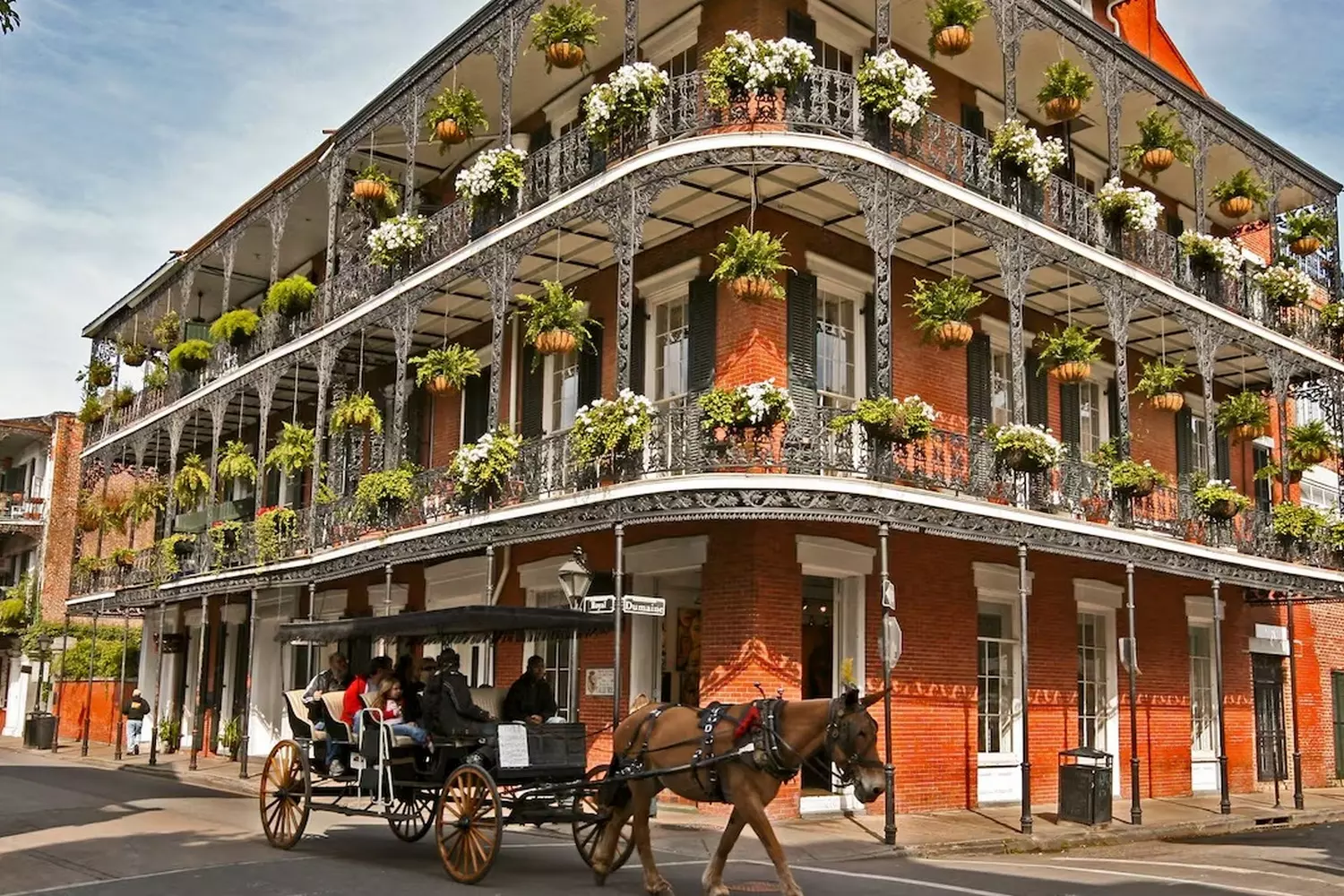
The Musical Soul of New Orleans: Where Jazz Lives in Every Brick
If the city had a soul, New Orleans’ would sound like an impromptu trumpet solo on a warm evening. Here, music isn’t just background — it’s the fabric of life, the heart that never stops beating. In this city, jazz wasn’t born in a conservatory but on the streets, in bars, cemeteries, kitchens, dances, in passion and pain. And it’s still alive — wild, free, and untamed.
- 01. Preservation Hall — the temple of true jazz
No frills, no formalities, no microphones. Just you, old walls, wooden benches, and genuine jazz musicians.
Preservation Hall is a small venue with a big history, opening its doors in 1961. They don’t serve drinks or food here. It’s a place for those who come to listen. To feel. To soak up the spirit of the times.
Every evening classic New Orleans jazz fills the hall, performed by masters of their craft. Not for show — for the feeling. There are no air conditioners, but nowhere will feel cooler: the magic of the music will refresh you. - 02. Frenchmen Street — the city’s pulse
Forget the touristy Bourbon Street. The real music scene bubbles on Frenchmen Street, just minutes from the noisy Quarter. Here jazz blends with blues, funk, soul, Afro-Caribbean rhythms, and even elements of hip-hop.
Walk down the street in the evening: music spills from every bar, café, and even the sidewalks. Someone’s improvising on a saxophone, someone’s playing on pots and pans, someone’s dancing barefoot.
This isn’t the past of jazz, but its vibrant, living, breathing present. Walking this street is like flipping through a musical comic book in real time. - 03. Snug Harbor Jazz Bistro — jazz and jambalaya
A cozy restaurant with dim lighting, tables by brick walls, a stage like a living room.
Snug Harbor is the perfect place to combine gastronomy and music. You can enjoy delicious food (we recommend their shrimp with buckwheat and Louisiana ribs) and hear outstanding jazz performers.
Local legends and world-renowned guests often play here. Plus, the acoustics are great, and the staff are polite, making for an especially comfortable evening. - 04. Spotted Cat Music Club — the jazz cat guarding the rhythm
Small, even cramped, but so soulful!
Spotted Cat is a no-frills club with a sincere atmosphere. Musicians play just a few feet away from you, the crowd feels like an old group of friends, and drinks are reasonably priced.
You can hear swing, dixieland, manouche jazz, and even some gypsy melodies. During breaks, strike up a conversation with locals who have been coming here for decades.
The real live New Orleans — unvarnished, with a spark in its eyes. - 05. Music at funerals: a tradition that keeps life going
Have you ever heard jazz played at a funeral? In New Orleans, it’s not shocking but an ancient tradition.
Jazz funeral processions, called jazz funeral bands, don’t just escort the deceased — they do it with respect and gratitude.
The ceremony starts with a slow, mournful march — melancholic and poignant. But once the body is laid to rest, the music changes: “When the Saints Go Marching In” plays, people dance, wave handkerchiefs, and blow horns.
This isn’t disrespect but recognition: life happened, it was beautiful, and it will go on. Even death here is a reason to play music.
New Orleans doesn’t need marketing slogans. Its soundtrack is the best invitation. Hear how the streets speak in rhythm with the drums, how the sunset sounds in brass trumpets, how the wine flows to the swing beats.
And one day you’ll understand: in this city, no one really dies — everyone just keeps playing.
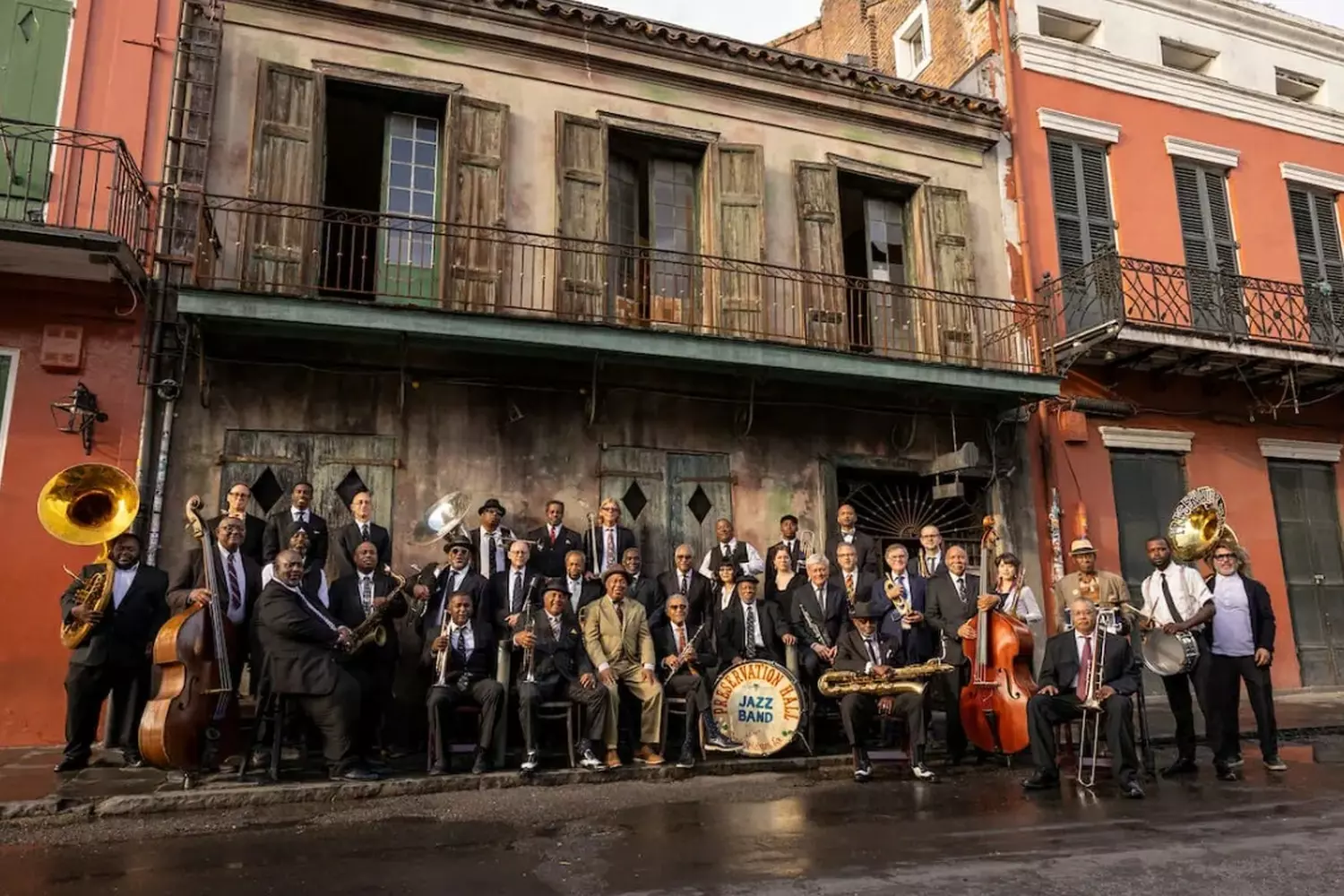
Creole and Cajun Cuisine — The Taste of New Orleans
"Food is the language of the city. And in New Orleans, it speaks of passion, history, culture, and freedom."
New Orleans is not just a city. It’s a cocktail of cultures, aromas, and sounds, richly seasoned with spices and color. To truly understand the soul of this city, jazz alone is not enough. You need to sit down at a table — wooden, old, with an open view of the street lined with balconies and palm trees — and taste. Feel. Hear the flavor.
- 01. Gumbo — a stew that tells you a story
Gumbo is like a symphony. In every city of Louisiana, it sounds a little different, but it is in New Orleans where the recipe reaches absolute perfection. It’s a thick, rich soup based on roux (flour and fat), with andouille sausage, shrimp, crabs, sometimes chicken or duck, and always fresh okra. It is cooked slowly, patiently, as if weaving in the conversations of generations. This is not just a starter — it’s a culinary legend that unites African, French, Spanish, and Native American traditions.
When you have a hot bowl of gumbo and outside the window rain falls with the scent of moss and jasmine, you’ll understand: you are home. Here, in New Orleans. - 02. Jambalaya — rice that dances with pepper
If food could dance, jambalaya would be performing a fiery Cajun dance. This is a hot rice dish cooked together with vegetables, meat (usually chicken and sausage), and seafood. It’s somewhat similar to Spanish paella but with a Louisiana spark.
There’s no single recipe for jambalaya — every chef makes it their own way. But there’s one rule: the dish must be generous, spicy, and soul-warming. Serve jambalaya with a glass of cold Abita beer or Creole lemonade, and you’ll know what Southern happiness tastes like. - 03. Beignets — sugary magic for breakfast and beyond
Café Du Monde. Early morning. Street musicians play quietly at the next table. You order chicory coffee and hot beignets — airy pillows of dough generously dusted with powdered sugar. These doughnuts are a national treasure of New Orleans, a symbol of morning bliss and cozy laziness.
You can’t eat beignets neatly — the sugar will surely end up on your nose, lips, or shirt. And that’s perfectly fine. Because beignets aren’t about aesthetics; they’re about joy.
Beignets came to French Louisiana with the colonists and became an integral part of the Creole breakfast. Prepare your napkins — you’ll want to eat more than you planned. - 04. Po'Boy — a sandwich for workers and gourmets
The name "Po'Boy" is short for "poor boy." Originally, it was a sandwich made for striking streetcar workers in the 1920s. It was made on a long French baguette with fried meat or seafood. Today, a po'boy is not just a snack but a true gastronomic pride.
The classic version features shrimp or oysters. Crispy baguette crust, soft crumb, a bit of aioli or remoulade sauce, slices of fresh vegetables — and juicy, crispy seafood inside. Add a bit of spicy Crystal hot sauce — and you hold a true Louisiana miracle in your hands.
Try the po'boy with roast beef in gravy too. You’ll have a hard time choosing which is tastier.
Creole and Cajun: what’s the difference?
These two cuisines are like two neighbors who grew up side by side but have different characters.
- Creole cuisine
This is the city’s cuisine. Elegant, layered, with a French accent. It uses cream, tomatoes, wine, and dishes are often more complex in structure. It’s the cuisine of white tablecloths and refined seasonings. - Cajun cuisine
Rural, energetic, bold. Its homeland is the Louisiana bayous, where they love everything fried, smoked, and spicy. It’s the cuisine of hunters and fishermen. Simple but soulful.
And both these cuisines are real musical scores of flavor. They cook loudly, eat heartily, and talk about life, death, love, and football.
Where to try the real taste of New Orleans?
- Café du Monde — legendary beignets and coffee. The perfect morning.
- Commander’s Palace — an icon of Creole cuisine since 1893.
- Coop’s Place — noisy, tasty, homestyle. The best jambalaya.
- Domilise’s Po-Boys — a family spot with authentic sandwiches.
- Acme Oyster House — oysters and gumbo that remember your name.
- Dooky Chase’s Restaurant — a favorite place of Martin Luther King and Barack Obama. Cuisine with history.
In New Orleans, people don’t just eat — they celebrate. Breakfast lasts all day, and lunch turns into dinner. Here, calories aren’t counted, but friends at the table are. That’s why the taste of New Orleans is not just a flavor. It’s a state of mind.
Here, food speaks. It tells the stories of slaves who cooked gumbo in the backyard. Of Cajuns who fled Canada and caught alligators in the bayou. Of musicians who ate po'boys between sets. And of a city that loves to eat richly, brightly, and generously.
Want to try all this in the best places with professional guides? American Butler will help organize a gastronomic tour of New Orleans: from coffee with beignets to dinner with oysters under jazz.
Plan your trip with flavor — and fall in love with the city forever.
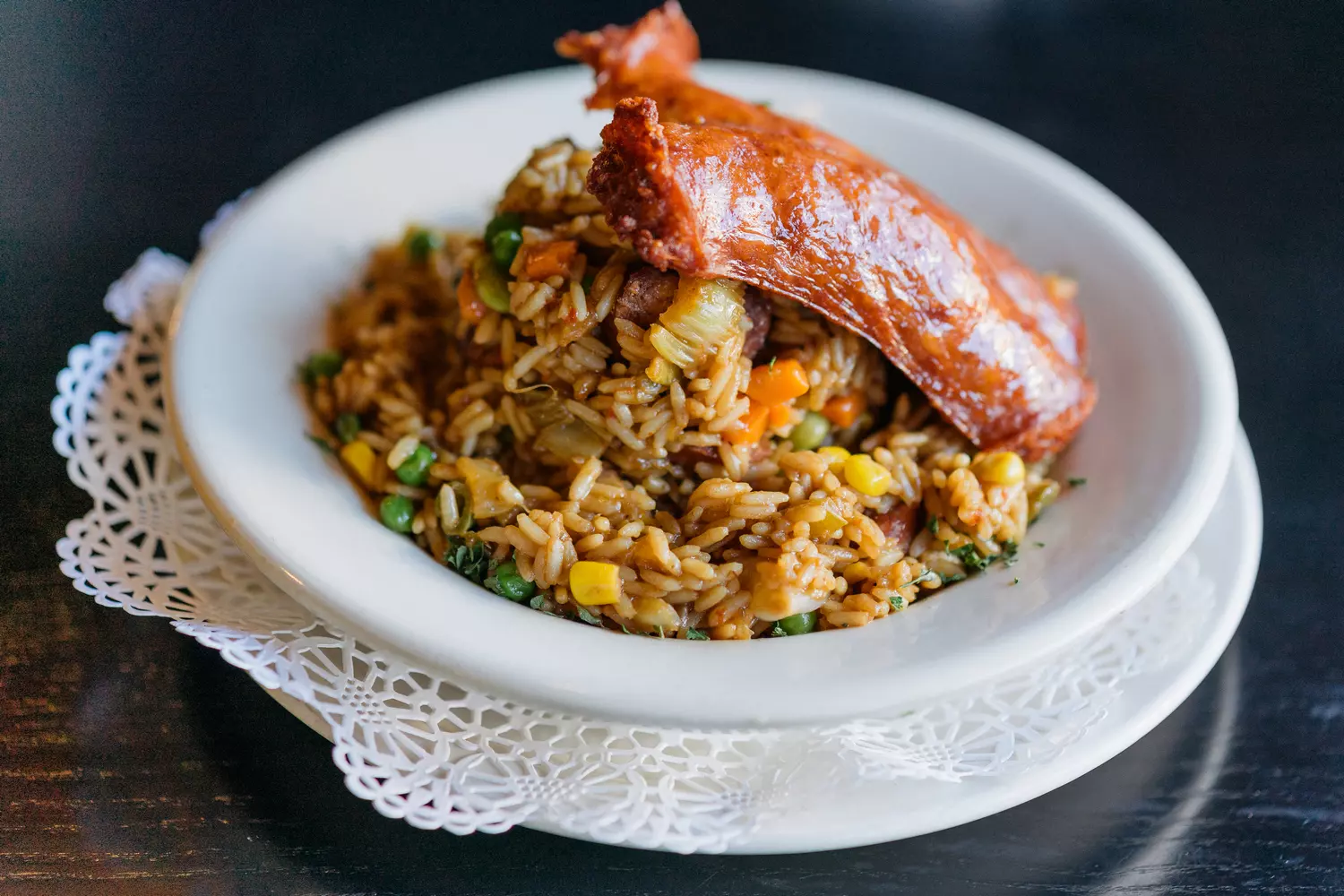
Festival Parade: From Mardi Gras to Jazz Fest
When music flows from balconies, the streets are sprinkled with glitter, and the air smells of fried shrimp and freedom — you know you’re in New Orleans.
Festivals in this city are not just cultural events, they are a way of life. Even the calendar seems to be set to the rhythms of trumpets and percussion. Each season brings its own celebration, and every one is a reason to dance, throw beads around your neck, and say “yes” to life.
- 01. Mardi Gras: a spectacle you can’t forget
When: February – early March
Where: the entire city, especially the French Quarter and Magazine Street
Mardi Gras is the king of all carnivals in the USA. Its roots lie in the Catholic tradition of celebrating "Fat Tuesday" before Lent, but in essence, it has turned into a riot of freedom, color, and self-expression.
For a month leading up to the main day, dozens of parades take place — each with its own theme, its own "royal court", its own flotillas, and huge allegorical floats from which beads, toys, and souvenirs are thrown into the crowd. These trophies are called throws, and people collect them with the enthusiasm of collectors. Highlights:
- Secret societies — krewes — prepare the parades for years;
- Some beads aren’t thrown but exchanged for… kisses or smiles;
- Costumes range from historical to surreal: you might see Napoleon with a fish tail or a mermaid wearing a Zorro mask.
Fun fact: Mardi Gras is an official holiday in the state of Louisiana.
- 02. New Orleans Jazz & Heritage Festival: the music of roots and the future
When: late April – early May
Where: Fair Grounds Race Course
If Mardi Gras is the heart, then Jazz Fest is the soul of New Orleans. The festival started in 1970 with a performance by the legendary Mahalia Jackson, and since then has grown into a world-class cultural phenomenon.
Despite the word "jazz" in its name, here you hear everything: from gospel to blues, from Creole music to funk, rock, country, and African rhythms. On stage have performed Stevie Wonder, Elton John, The Rolling Stones, Beyoncé, and, of course, countless local stars. What’s special:
- Several stages with live performances;
- A Creole food fair: jambalaya, fried oysters, grilled alligator;
- Craft fairs where you can find African American and Cajun art.
- 03. French Quarter Festival: the rhythm of the streets and the aroma of beignets
When: April
Where: French Quarter
This festival was created for locals but has become a magnet for tourists. Unlike Jazz Fest, it is completely free and by the number of stages and artists has long matched it.
More than 20 stages are set up right on the streets, by the Mississippi riverfront, on Jackson Square, and in alleys. The music never stops — you can have breakfast to the blues, lunch to swing, and dinner to marching jazz. What else awaits you:
- A huge food zone with the city’s best restaurants;
- Masterclasses from chefs;
- A friendly, intimate atmosphere without overcrowding.
- 04. Voodoo Music + Arts Experience: night, beat, and energy
When: Halloween, late October
Where: City Park
This festival is for those seeking drive, style, and powerful sound. It gathers alternative youth, fans of indie, electronic music, heavy rock, and art. The name is no coincidence: Voodoo evokes a ritual — nocturnal, mystical, with lighting, masks, performances, and wild energy. Over the years, performers have included Marilyn Manson, Nine Inch Nails, Arctic Monkeys, Tool, Travis Scott, G-Eazy. Features:
- Installations and art objects;
- Food court with trendy local dishes;
- Rest zones and photo zones in "gothic-funk" style.
Tip: don’t forget your costume. Even the audience becomes part of the show.
- 05. What unites all the festivals?
- They are alive
This is not just a show, it’s engagement. You are not a spectator, you are part of the orchestra of life. - They are about the soul
Here people don’t pose — they feel. People genuinely smile, dance, laugh, sing. - They are unforgettable
No photo can convey the sound of a trumpet against the purple sunset over the Mississippi River. You have to experience it.
- 06. Even grandmothers dance
During festivals, the city seems to shed its age. On balconies — elderly couples throwing beads to passersby. In parks — grandfathers with banjos playing alongside young rappers. Street performers, children, tourists, and locals — all become one organism living to the rhythm of New Orleans.
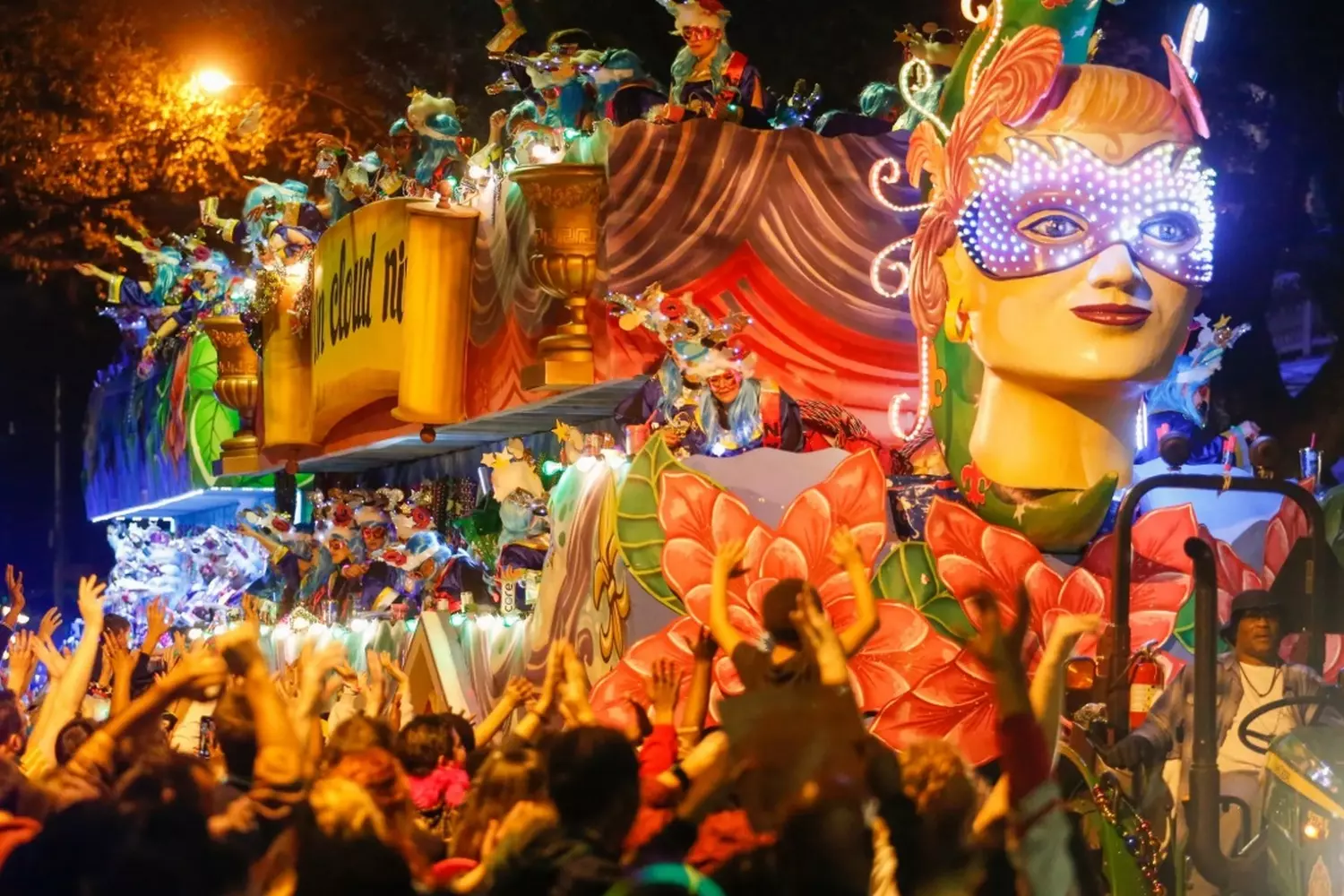
Mysticism and Cemeteries of New Orleans: Voodoo, Ghosts, and Gothic Reality
When we talk about New Orleans, it’s impossible not to touch on the topic of mysticism. This city is literally steeped in the spirits of the past — not just as a figure of speech, but as an everyday reality. Here, mysticism is not entertainment, but a part of the cultural code, deeply rooted in the region’s history. And at the very heart of this story is voodoo.
Voodoo — a religion brought by slaves, but became a symbol of the city
The origins of voodoo (or vodun, as it’s called in Africa) trace back to West Africa. With thousands of enslaved people, their faith crossed the ocean and, when encountering the Catholicism of the French colony, transformed into what is now called Louisiana voodoo.
This unique form of faith absorbed elements of Catholic ritual (saints, candles, altars) but retained its African foundation: belief in ancestor spirits, contact with the invisible world, rituals involving chants and dances.
Officially, voodoo was banned for a long time. It was practiced secretly, on the outskirts of the city, under the cover of night. But despite persecution, voodoo survived — as a living, syncretic religion and as a powerful cultural symbol of resistance.
- 01. Marie Laveau — not a witch, but a spiritual leader
The central figure of Louisiana voodoo is the legendary Marie Laveau, a beautiful mulatto woman born in 1801. Her story is shrouded in mystery: some sources say she was a simple hairdresser, others — a powerful priestess able to heal, predict the future, and summon spirits.
Marie became an iconic figure during her lifetime, and after her death — a semi-mythical symbol. Her tomb in the St. Louis Cemetery No. 1 is covered with crosses and offerings: coins, beads, notes, candles — all are left as requests for help or expressions of gratitude.
But it’s important to remember: Marie Laveau was not a "witch" in the Hollywood sense, but a community leader, healer, protector of the oppressed, and a mediator between worlds. - 02. Ghosts, spirits, and everyday magic
Mysticism in New Orleans is not “for tourists”; it’s part of daily life. Locals (especially among the old Creole population) still observe rituals, use amulets, and reach out to ancestor spirits. It’s not unusual to hear someone say, "My grandmother still lights a candle when she wants to talk to my grandfather."
Voodoo rituals today can be both public (at festivals, for example) and private — within circles of the initiated. Voodoo shops, many of which are found in the French Quarter, sell not only souvenirs but also real ritual tools: roots, oils, herbs, statues, candles. Many of these shops are run by actual priestesses or priests. - 03. Is voodoo still practiced today?
Yes. But not in the way horror movies portray it. Modern Louisiana voodoo is a blend of culture, spirituality, and ethnic pride. It exists as a religion, a way of life, and a mindset. Its elements can be found on family altars, in nightclubs, on the streets, in art, music, and even cuisine.
Moreover, voodoo remains a tool of social unity. It brings together African American communities, preserves the language of ancestors, customs, and a philosophy of interaction with the world — where every object and every action holds meaning.
At the heart of New Orleans lies a world full of mysteries and mysticism. Every street, every house, and every cemetery holds its secrets, and legends come alive in the night glow of street lamps. If you’re ready to touch the otherworldly and see the city from another side — welcome to places where reality intertwines with legend.
The City of the Dead: New Orleans Cemeteries
Yes, the cemeteries here are also attractions. The swampy soil of the region did not allow for underground burials: with rising water levels, coffins would float like corks. Therefore, since the 18th century, a unique tradition of above-ground burials took hold — in vaults, mausoleums, crypts, and tombs. Essentially, each cemetery is like a mini-city with streets, “houses,” and centuries of history.
- 01. St. Louis Cemetery No. 1: the resting place of the great voodoo priestess
The most famous cemetery in New Orleans — St. Louis Cemetery No. 1 — is just a few minutes’ walk from the French Quarter. It’s the oldest cemetery in the city (opened in 1789) and looks like a miniature city: narrow passages, white stone vaults, carved crosses, jasmine bushes growing from walls, and a heavy, dense atmosphere.
Here lies the tomb of Marie Laveau — the legendary voodoo priestess who was both a healer, seer, and political figure. To this day, you can see sticks of cinnamon, coins, notes with requests, and even strands of hair left on her crypt — locals and tourists alike ask for help, luck, protection, and love.
Interesting fact: entrance to the cemetery is now only possible with a guide to prevent vandalism. It’s not just a tour, but an immersion into the atmosphere of the past, where stories chill the blood. - 02. Metairie Cemetery: Gothic, like in a Tim Burton movie
Metairie is a cemetery unlike any other in the USA. Located on the site of a former racetrack, it looks like something between a museum gallery and a vampire film. Majestic vaults in Gothic style, angels with bowed heads, figures of mourning, crosses, lions, colonnades... and even a true neo-Egyptian mausoleum designed like a temple! It also houses a mausoleum with a marble statue of an angel who seems to mourn the fate of the South. Some tombs reach the height of two-story houses, and there are Gothic chapels.
Many influential Louisiana figures are buried here — politicians, businessmen, artists. Interestingly, the cemetery became “fashionable” after a jockey refused to race due to racial discrimination, and the new owner decided to turn the racetrack into a resting place for "equals in death."
A walk through Metairie is like stepping into an Anne Rice novel: grandeur, mystery, and a timeless atmosphere. It’s especially beautiful at sunset when the shadows of the vaults lengthen and light refracts through glass mosaics. - 03. Lafayette Cemetery No. 1: old-world charm and cinema
Located in the Garden District, this is one of New Orleans’ most photogenic cemeteries. Films such as “Interview with the Vampire,” “The Tree of Life,” “American Horror Story” were shot here.
Burials date back to the early 19th century. Many tombs are weathered by time, moss covers the stones, creating an atmosphere of an old European cemetery full of secrets. The energy here is less intense than at St. Louis No. 1, and there is plenty of greenery. The atmosphere feels like being in an abandoned but beautiful park.
Interesting fact: most vaults here are family tombs and can contain the remains of dozens of people — on different tiers and “levels.” - 04. Holt Cemetery: another face of death
Unlike the grand mausoleums, Holt Cemetery is the resting place of ordinary people, including African Americans. There’s no marble here — crosses are handmade, plaques are handwritten, and toys and photos are left by loved ones.
This is a true “people’s” cemetery where sadness and love are felt especially deeply. And yes — there are also ghosts here, especially near children’s graves… - 05. St. Louis Cemetery No. 2
Located a bit further from the French Quarter, but no less interesting. Here rest:
- Ernest "Papa" Mendes, a famous jazz musician;
- Paul Morphy, a renowned 19th-century chess player;
- Many Creole families who left their mark on the city’s history.
This cemetery attracts an atmosphere of calm and silence — and there are far fewer tourists here.
What else mystical does New Orleans offer?
- 01. Ghost tours: when the night becomes dense
One of the city’s main attractions is the night ghost tours. This is not a children’s spooky story, but a full theatrical show where you are led through the darkest streets, told stories about cursed houses, sinister sounds, and vanished residents.
Some routes include the “most haunted house in America” — the LaLaurie Mansion, once ruled by Madame Delphine LaLaurie, a figure wrapped in horror and bloody legends.
You’ll hear stories passed down through generations. Don’t be surprised if your guide shows photos with “unexplained shadows” or strange glimmers. And watch your feelings carefully: sensitive people often note “presence” even in crowds in this city.
- The LaLaurie House — a mansion with a terrifying past, where slaves were tortured.
- The Andrew Jackson Hotel — where guests hear footsteps and see shadows.
- A music club where, according to rumors, the spirit of a saxophonist still plays…
And yes, something might really catch you here. It’s said equipment often breaks on these tours, and lanterns flicker without reason.
- 02. Voodoo shops, aromamagic, and ancient amulets
In the very heart of the French Quarter — not fake “wonder shops,” but genuine voodoo stores selling not just souvenirs, but items with history and meaning. Roots, oils, ritual candles, amulets, dolls with pins — all can be bought and you can learn how to use them.
Some of these shops, such as Voodoo Authentica, are owned by descendants of real practitioners and initiates. Here they explain which spirits govern what, and what rituals to perform for love, protection, and wealth. The sellers are not just cashiers, but experts, sometimes shamans, performing rituals right on the premises.
In New Orleans, mysticism is reality, not a performance. Locals treat the dead with respect and the spirits with reverence. Even official documents mention “houses with history” where exorcisms were performed or paranormal activity recorded.
This does not frighten. It’s part of the culture. Because in this city, like nowhere else in the world, two worlds live side by side: ours and the one beyond.
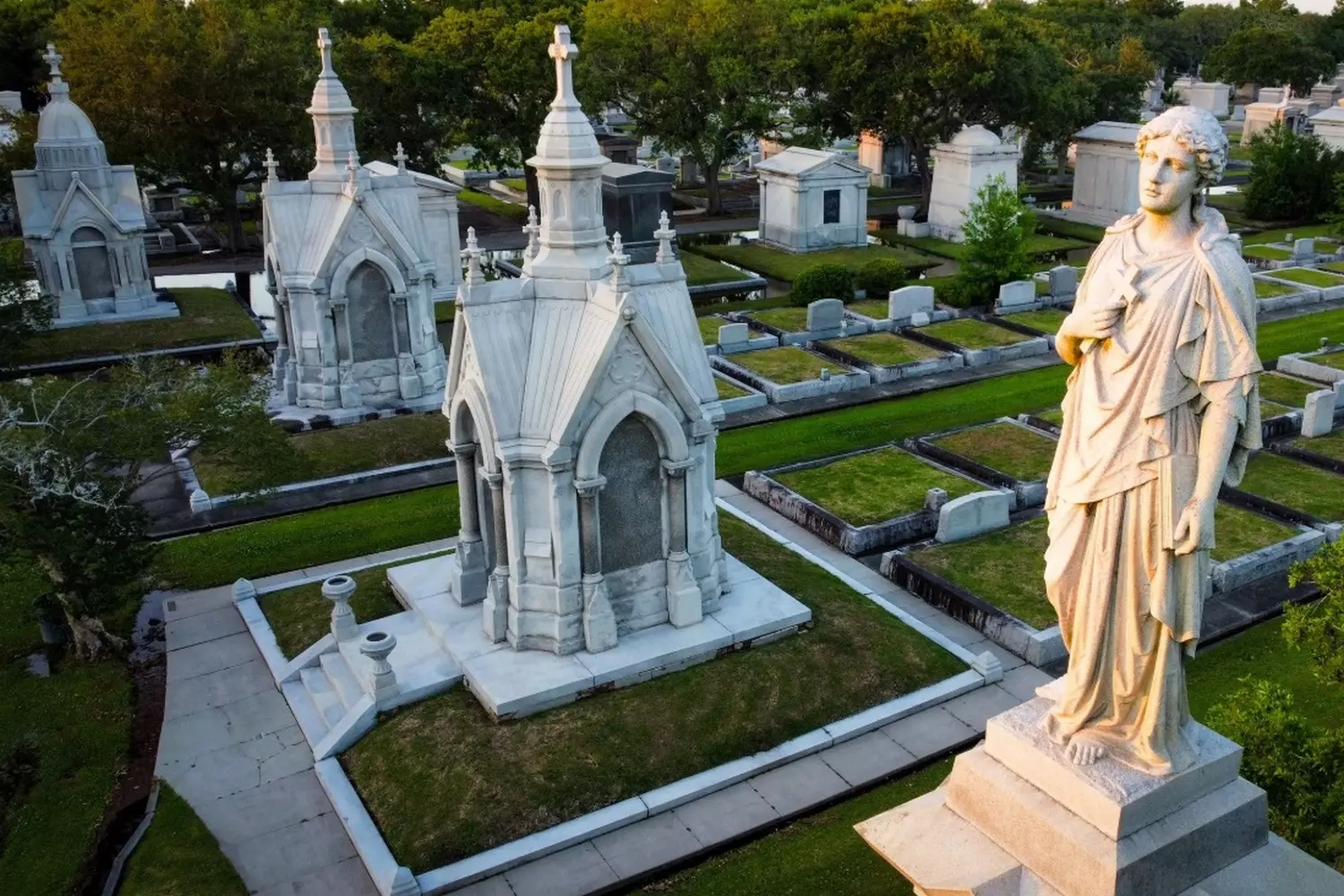
Helpful Tips for Tourists: How to Make Your Trip Comfortable and Safe
New Orleans is a vibrant, lively city full of history. But to make sure your trip leaves only pleasant memories and no unexpected troubles, it’s important to know a few nuances. We’ve gathered the most valuable tips and information on how to get around the city.
- 01. Weather and the best time to visit
New Orleans is located in the southern USA, in a humid subtropical climate zone. Summer here is like a real sauna, with high humidity and temperatures sometimes reaching 30–35°C. It feels much more intense than in drier regions. Tip:
- It’s better to plan your trip in spring (March–May) or autumn (September–November). During these periods, the weather is milder and warmer but not stifling, and rains are less frequent.
- In winter, temperatures rarely drop below 10°C, so winter is also acceptable for a visit, but be prepared for some chill.
- In summer, be sure to bring a hat, sunglasses, and light, breathable clothing.
- 02. How to behave with locals
New Orleans is famous for its hospitality and friendliness, but — as in any tourist place — it’s important to follow some basic rules of respect:
- Respect personal space
Locals are used to tourists but dislike intrusive behavior. If someone says “no,” don’t insist. - Be polite and open
But don’t cross boundaries — avoid asking overly personal questions or disturbing people in their daily lives. - Keep the city clean
Pick up after yourself and don’t litter — this is especially important in New Orleans due to frequent rains and winds. - Don’t photograph people without permission
Especially in residential areas and culturally significant places.
- 03. Evening safety
Although New Orleans is a city of festivals and music, you should be more cautious in the evening and at night:
- Avoid walking alone in poorly lit and remote areas, especially if you’re unfamiliar with the neighborhood.
- Stick together in groups, use taxis or trusted ride-hailing services (like Uber or Lyft).
- Be alert on Bourbon Street and other popular tourist spots: these places are crowded and noisy but occasionally experience petty theft and scams.
- Carry only essential documents and money. It’s better to leave original documents at your hotel.
- 04. Tips — a part of New Orleans culture
In the USA, tipping is not just a polite gesture but an important part of service workers’ income. This is especially noticeable in New Orleans, where live music often accompanies restaurants, bars, and cafes, and the service level is high.
- Typically, leave 15–20% of the bill amount in restaurants and cafes. If the service was exceptional, tip 20% or more.
- In bars and taxis, it’s customary to leave $1–2 for the service.
- When booking tours with guides or drivers, it’s also customary to tip if you’re satisfied with the service.
- 05. Secrets of getting around: how not to get lost and see everything
New Orleans is a city where streetcars are not just transportation but a real attraction. The historic streetcar lines (St. Charles and Canal Street) still run through the city center, allowing you to leisurely enjoy the views. Tip:
- Photograph the streetcar schedules in advance, as intervals between them can be longer than they seem. Sometimes you may wait 15–20 minutes.
- For those who like to walk — the downtown area is compact, and many main attractions can be reached on foot. It’s a great way to soak in the atmosphere.
- 06. How to get there and transportation infrastructure
- The main airport is Louis Armstrong New Orleans International Airport (MSY), located about 20 km from the city center. It’s convenient to get from the airport by taxi, shuttle, or rental car.
- The city is served by numerous bus routes, but tourists usually find streetcars and walking more convenient.
- Car rental isn’t always necessary if you plan to stay downtown, but it’s handy for trips to the surroundings and national parks.
Traveling to New Orleans is a feast for the senses, a chance to dive into a history and culture filled with music and mystique. Follow these simple tips — and every day in this city will be an easy, bright, and safe adventure.
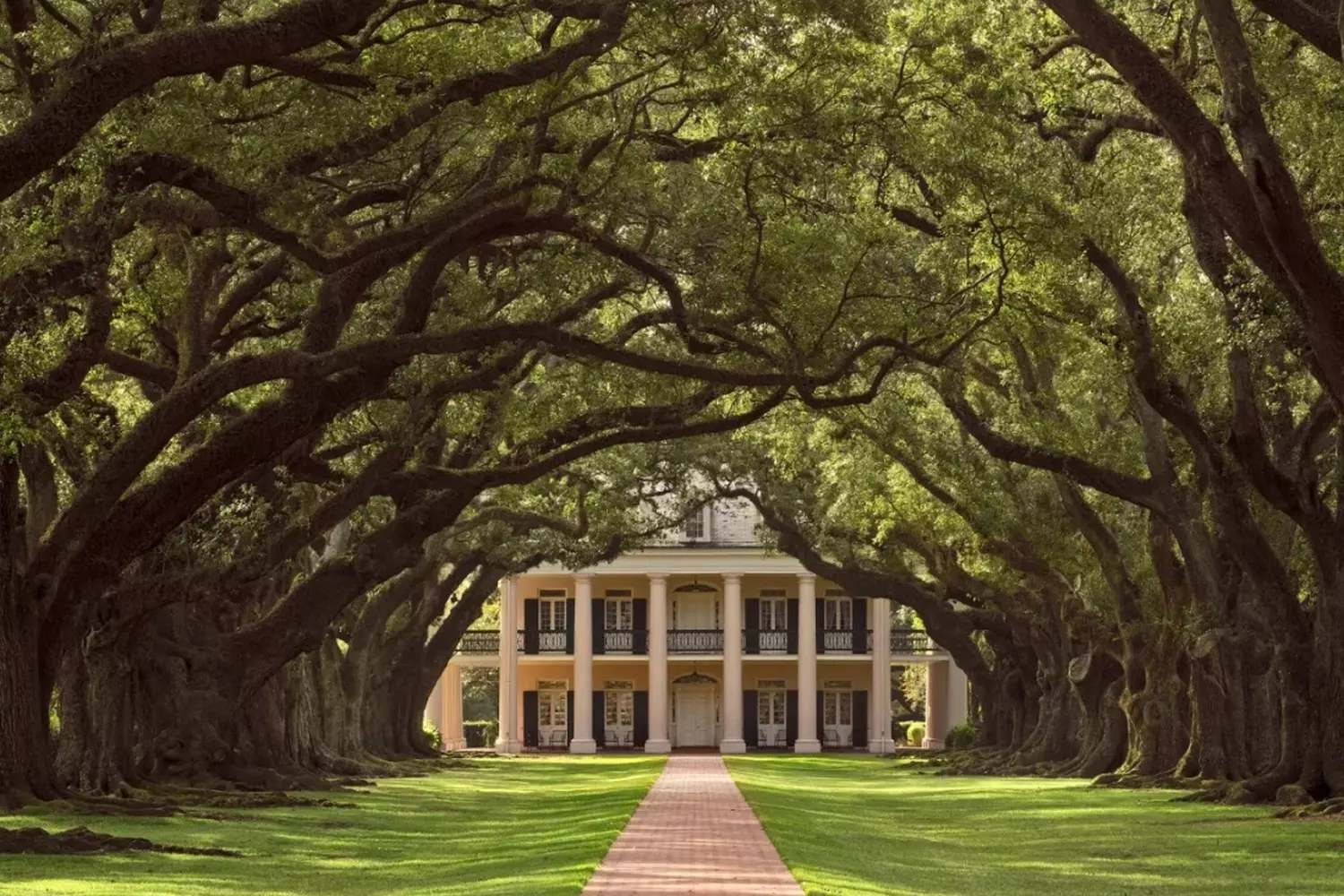
New Orleans: A City Inspiring Millions
New Orleans is not just a city on the map of Louisiana; it is a source of inspiration, a cradle of creativity, and a cultural phenomenon. Its unique blend of peoples, traditions, and musical rhythms has not only created an unforgettable atmosphere but also made it one of the most important centers of art and culture in the USA.
- 01. The musical mosaic: from jazz to the modern scene
New Orleans is widely recognized as the birthplace of jazz, a musical genre born in the early 20th century here at the crossroads of African rhythms, European classical music, and Caribbean melodies.
- Jazz is more than just music; it’s the city’s language. You can hear it in every café, on every corner, and in every saxophone chord. Legendary musicians like Louis Armstrong, Ella Fitzgerald, and Duke Ellington drew inspiration here.
- Besides jazz, the city thrives with blues, ragtime, soul, funk, and even modern hip-hop, making New Orleans’ musical palette incredibly rich.
- Live concerts take place everywhere—from the iconic Preservation Hall to the bustling Frenchmen Street, where you can dive into the true spirit of a musical celebration.
- 02. Literary heritage: the city of words and stories
For centuries, New Orleans has been home and muse to writers and poets. Its narrow streets, eerie cemeteries, and sultry evenings have provided the setting for hundreds of stories.
- Anne Rice made New Orleans synonymous with vampire gothic, bringing the city to life in her famous “Interview with the Vampire” series.
- William Faulkner, a Nobel laureate, reflected the complex Southern mentality in his works, partly shaped in this region of the USA.
- The city is known for its literary festivals and support for local authors, preserving a love for storytelling and narration.
- 03. Visual arts: a palette of cultures
New Orleans boasts thriving art galleries, street installations, and studios reflecting its rich cultural heritage:
- Local artists draw inspiration from Creole, African American, and French traditions, creating unique paintings, sculptures, and graphics.
- The New Orleans Museum of Art is a hub for fine art lovers, showcasing works from classical to contemporary.
- Street art and murals on neighborhood walls are another way to express cultural identity and history, enlivening urban spaces.
- 04. Theater and cinema: stage and screen
The city is renowned for its theatrical productions, often inspired by local legends, music, and history. Numerous theaters support diverse genres—from classics to avant-garde.
- Famous films such as “Ocean’s Twelve,” “Interview with the Vampire,” and “American Horror Story” were shot here, reflecting the city’s unique atmosphere.
- Annual film and theater festivals attract talented actors and directors from around the world.
- 05. Culinary art — taste and culture
You cannot speak about New Orleans culture without mentioning its cuisine, which is an art form itself—vibrant and alive.
- Creole and Cajun cuisines synthesize French, African, and Spanish traditions, producing dishes with bold flavors and rich history.
- Local chefs create gastronomic masterpieces that have become symbols of the city, attracting gourmets from all over the world.
- Food festivals are an integral part of cultural life, where music, art, and cuisine come together in a single celebration.
Interesting fact: New Orleans is so closely connected to art that it became home to the first museum in the USA dedicated to African American art — the The Amistad Research Center. It symbolizes respect for the history and culture of those who made this city special.
New Orleans is a living open-air museum where art and culture intertwine in every sound, every brushstroke, every story. Visiting this city means getting inspired, diving into an ocean of creativity, and feeling the pulse of America’s true cultural heart.
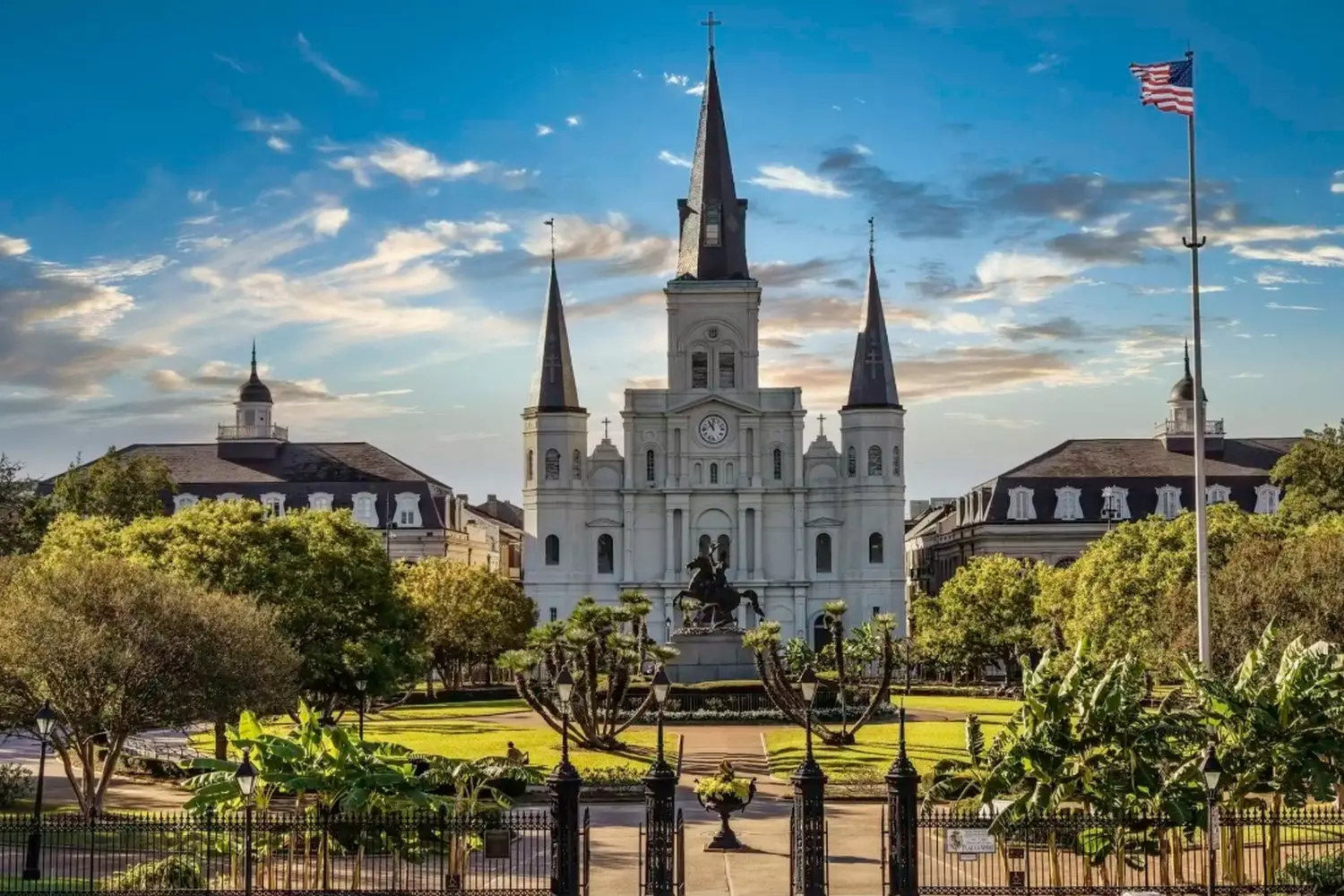
New Orleans: 20 Amazing Facts About the City Where Jazz Meets Voodoo
New Orleans is not just a city, but a living legend where history, culture, and mysticism intertwine into a whimsical tapestry. It is the birthplace of jazz, where people were buried above ground, and the streets still whisper stories of ghosts and curses. This city, nicknamed "The Big Easy", knows how to surprise — from its unusual traditions to its dark secrets.
- 01. City motto: "Let the good times roll!"
The official motto of New Orleans is "Laissez les bon temps rouler" (in Cajun French — "Let the good times roll!"). This slogan reflects the carefree spirit of the city, where parties, jazz, and carnivals are part of everyday life. - 02. The serial killer who spared jazz lovers
In 1918–1919, a killer known as the "Axeman" terrorized the city, leaving letters in newspapers. In one, he promised not to harm those listening to jazz. At the appointed hour, hundreds of locals turned on the music to save themselves. - 03. The cursed Manchac swamps
The swamps around the city are shrouded in legends. It is said they were cursed by a voodoo witch, and later people disappeared there without a trace. Today, tourists paddle among alligators while hearing eerie tales of rougarou — local werewolves. - 04. The most visited "ghost town" in the USA
New Orleans is called the capital of paranormal phenomena. It is full of infamous places: the LaLaurie Mansion, where slaves were tortured; the Muriel's restaurant with its "eternal guest" ghost; and the Hotel Monteleone, haunted by the spirit of a child. - 05. The city where they eat alligators
The local cuisine is eccentric: alligator sausages, crawfish stew (crawfish), and jambalaya — a spicy dish with seafood and sausage. They also invented the "po' boy" sandwich here, originally for poor dockworkers. - 06. The unique "causeway bridge"
Lake Pontchartrain is connected to the city by the longest causeway bridge in the world (38.5 km). Built in the 1950s, it is today an engineering marvel and a popular photo spot. - 07. The world’s first mixed cocktail — the Sazerac — comes from New Orleans
The Sazerac, the official cocktail of Louisiana, was invented in 1838 at a pharmacy on Canal Street. Originally made with cognac, absinthe, and bitters, the cognac was later replaced by rye whiskey. Today, you can try it at the Sazerac Bar in the Roosevelt Hotel. - 08. A street named after a pirate
Jean Lafitte — a famous pirate and smuggler who helped Americans defeat the British in the Battle of New Orleans (1815). A national park and an entire neighborhood — Lafitte — are named in his honor. - 09. The "Museum of Death" with real skulls
The Museum of Death (Friedman Museum) is a creepy place housing a collection of real skulls, murder weapons, and crime photos. One of the darkest exhibits is the death mask of a serial killer. - 10. The "Wishing Tree" that grants dreams
At St. Roch Cemetery stands a tree covered with prosthetics, crutches, and medical bandages. Legend says that if you leave something related to an illness here, you can be healed. - 11. The narrowest street in the USA
Pirate’s Alley is a tiny alley only 3 meters wide. According to legend, pirates once hid here. Today it houses the William Faulkner House Museum, where he wrote his novels. - 12. The "floating houses" that survived Hurricane Katrina
In the Marigny district, you can see houses on pontoons that survived the 2005 disaster. Some are still inhabited, others turned into bars and hostels. - 13. An underground city beneath the French Quarter
Under the French Quarter lies a network of tunnels and cellars from the 18th century. Some say pirates, smugglers, and even vampires hid here. Today, guided flashlight tours take brave visitors below — if you dare! - 14. The first opera in America premiered here
In 1796, the first permanent opera house in the USA opened in New Orleans. The historic Theatre d’Orleans building now houses a casino, but the spirit of music still lingers within its walls. - 15. The only "witch tree" in the USA
The "Marie Laveau" oak tree in the Algiers Point district is considered a place of power. According to legend, the voodoo queen conducted rituals here, and today people tie ribbons with wishes to its branches. - 16. The city still uses old gas lamps
More than 1,600 gas lamps still light the streets of New Orleans, especially in the Garden District. Every evening, lamplighters manually ignite them — just like in the 19th century! - 17. A church where vampires were married
St. Louis Cathedral is the oldest active Catholic cathedral in the USA. Rumor has it that in the 19th century, couples suspected of vampirism were secretly wed here. Today, strange voices are sometimes heard within its walls... - 18. Poker was invented here
Modern poker appeared in New Orleans gambling houses in the early 1800s. Initially, it was played only on riverboats cruising the Mississippi. - 19. The unique "singing" sidewalk
At the corner of Royal and Saint Peter Street, there is a tile that produces musical sounds when stepped on. This is no accident — in the 19th century, it marked locations of secret jazz clubs. - 20. A descendant of the voodoo queen still lives in the city
Michaelle Laveau, the great-great-granddaughter of the legendary Marie Laveau, continues the voodoo traditions. She performs rituals and even consults writers of "American Horror Story."
New Orleans is a city of contrasts, where joy coexists with mysticism, and history comes alive in music and legends. Want to feel its spirit? Just play some jazz, order gumbo, and imagine ghosts whispering along Bourbon Street...
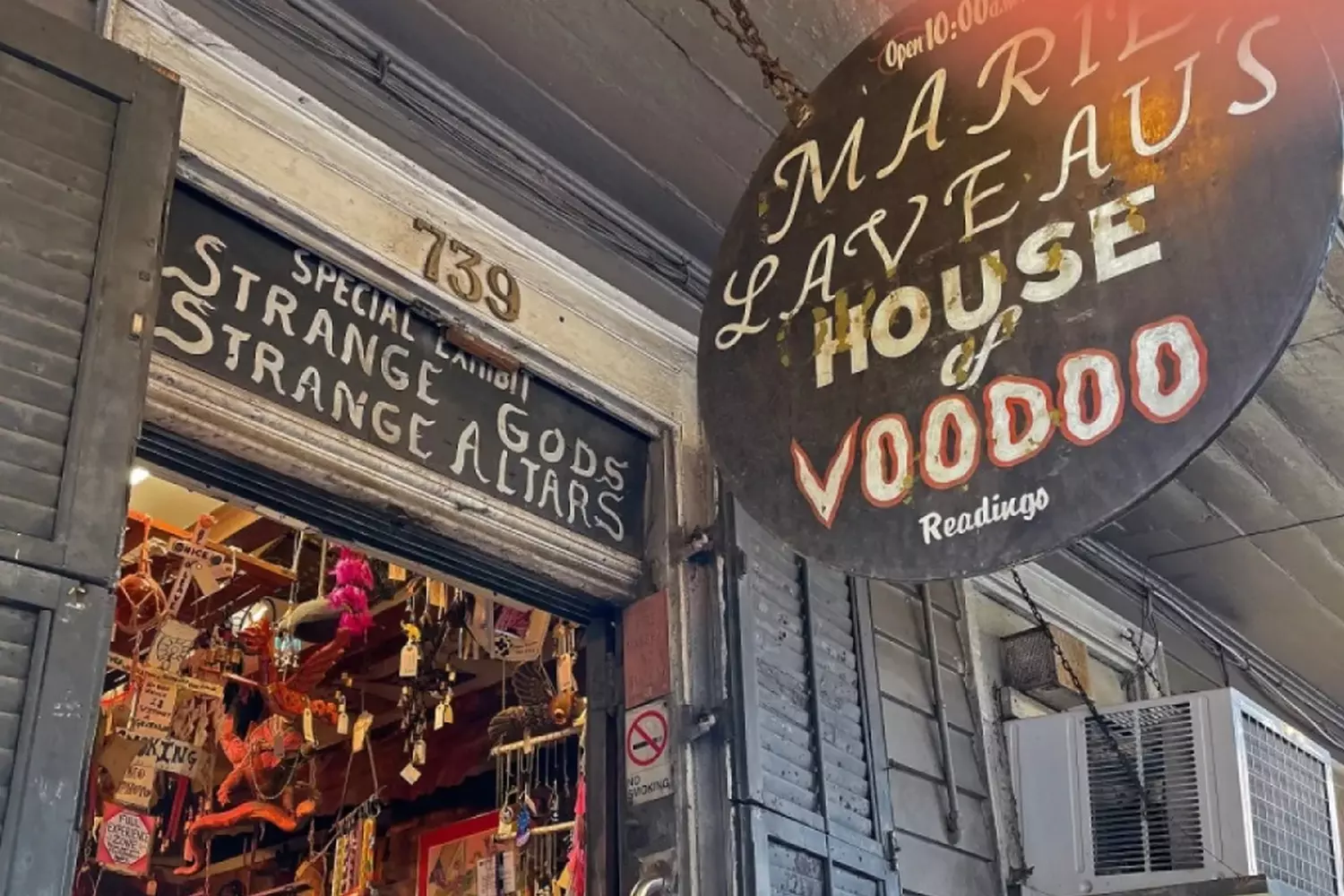
Discover the Real New Orleans with American Butler
New Orleans is a city you can never forget. Its unique atmosphere, cultural fusion, music, mysticism, and unmistakable spirit make hearts beat faster and inspire new discoveries. It’s a place where the past meets the present, and every street is a living work of art.
But to truly feel this city, dive into its secrets and legends, and see not only the most famous sights but also hidden gems — it’s best to trust the professionals. That’s where American Butler comes in — a team of experienced guides and organizers who will create a personalized itinerary tailored to all your wishes and interests.
With American Butler, you will get:
- Unique tours to mystical places and cemeteries that you can’t visit on your own;
- The chance to visit iconic restaurants and taste authentic Creole cuisine;
- Comfortable transportation around the city in private vehicles without any hassle;
- Attention to detail and friendly accompaniment so you feel right at home.
Don’t miss the chance to see New Orleans through the eyes of true connoisseurs, learn its most treasured stories, and make your trip unforgettable.
Book a tour with American Butler right now and immerse yourself in the magic of New Orleans with the professionals!














